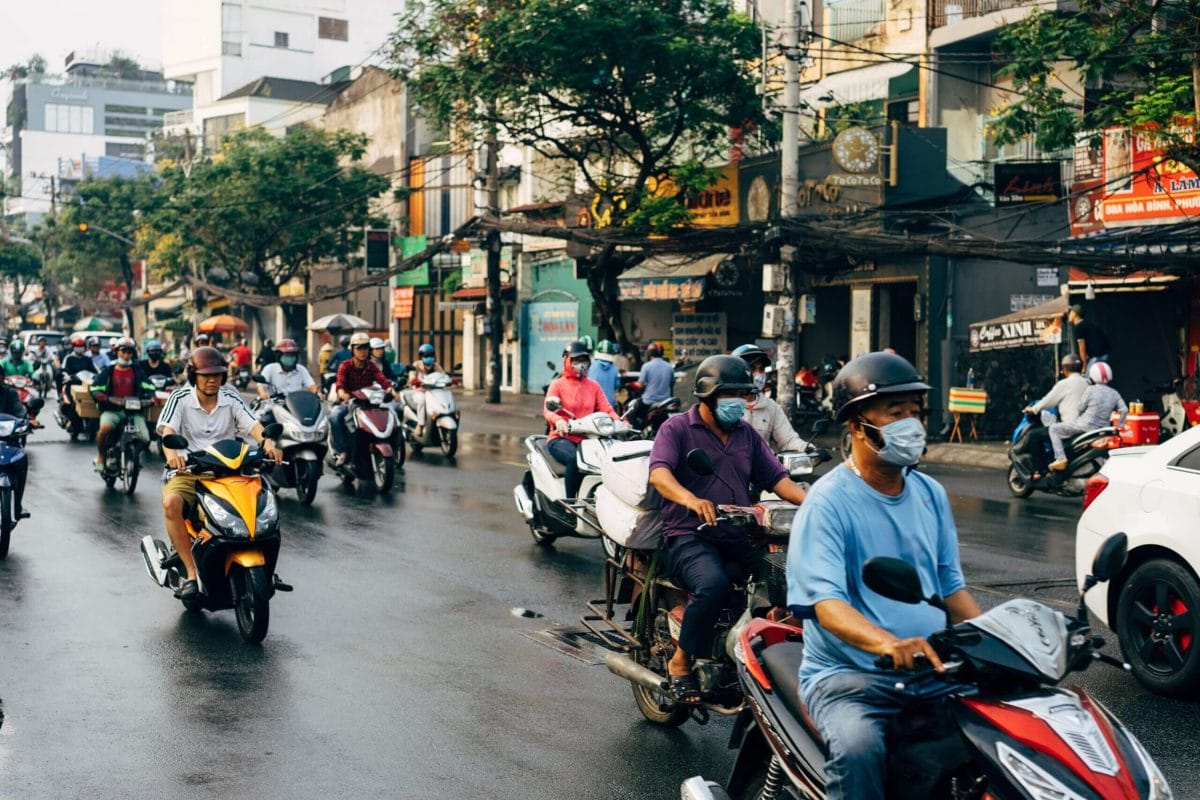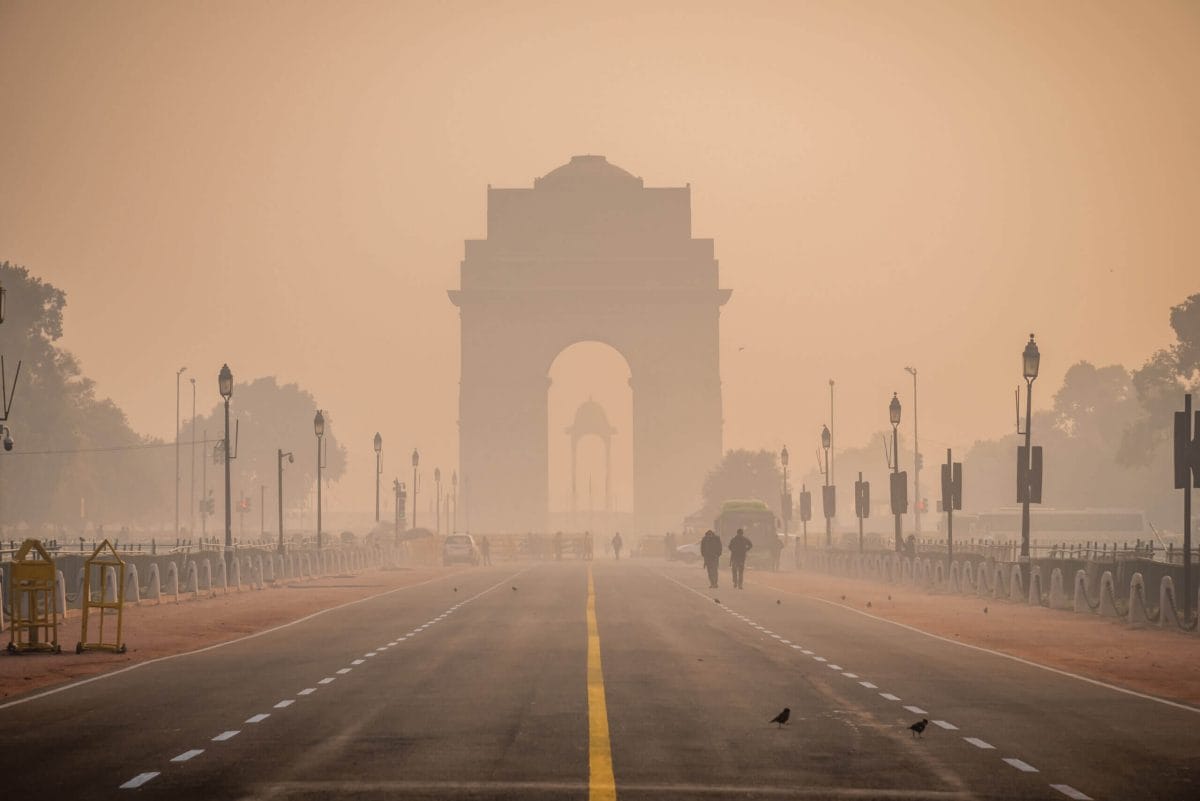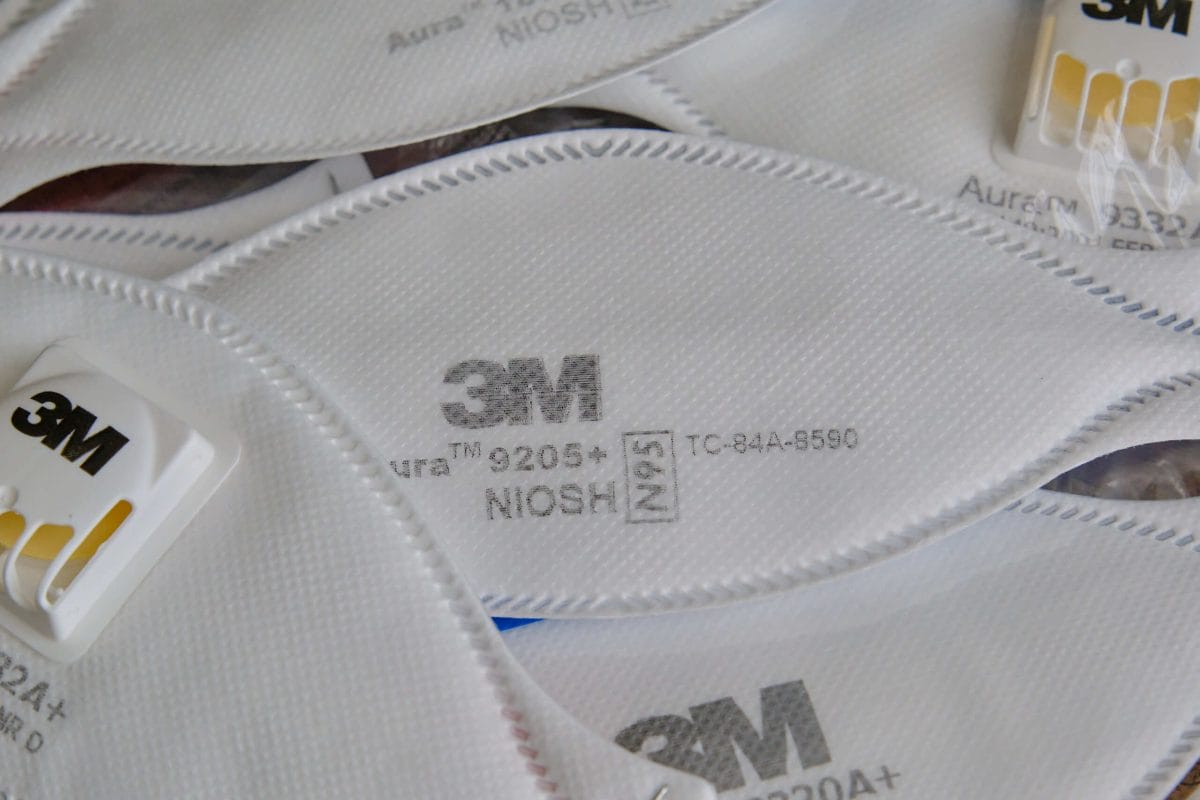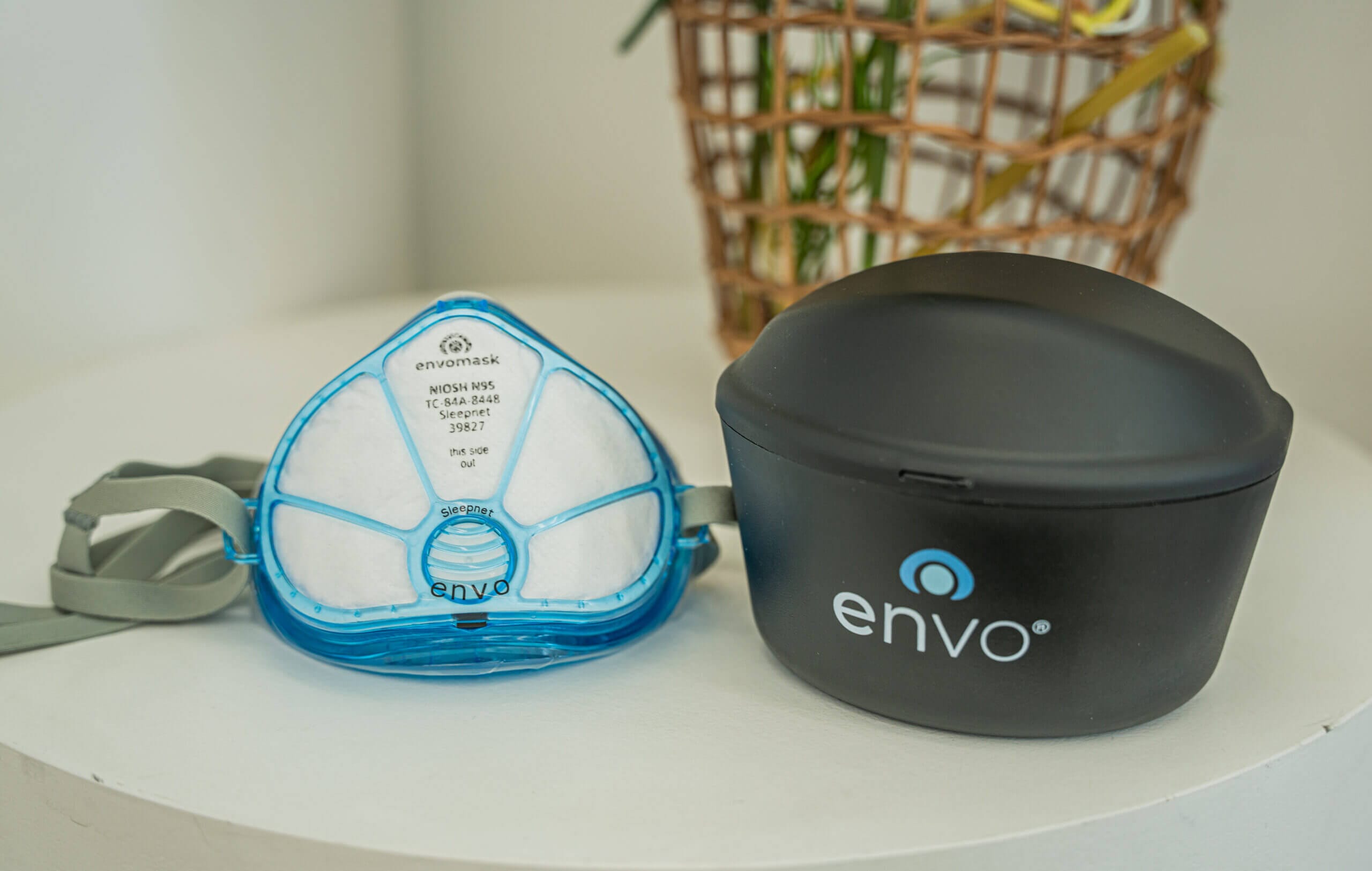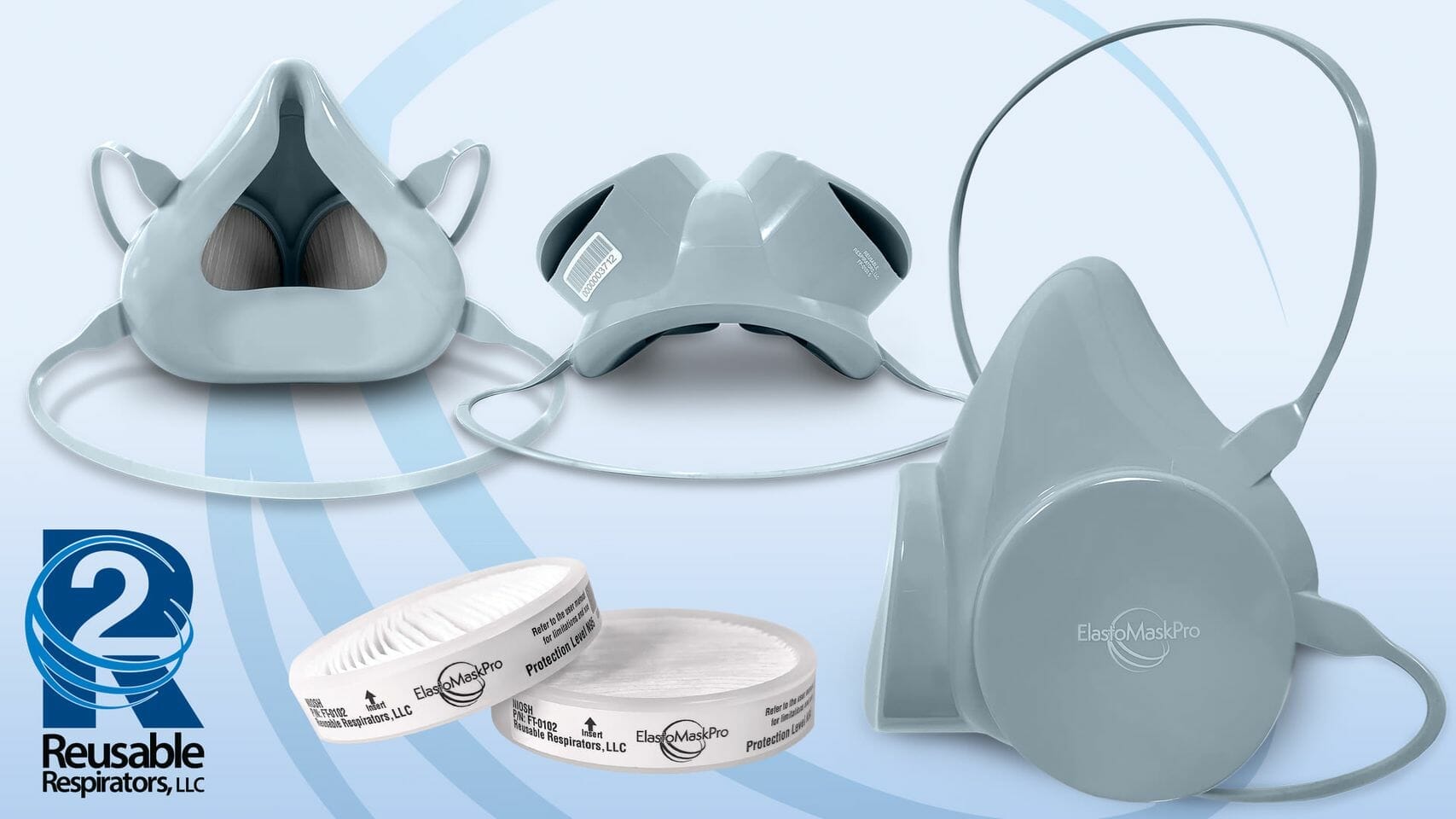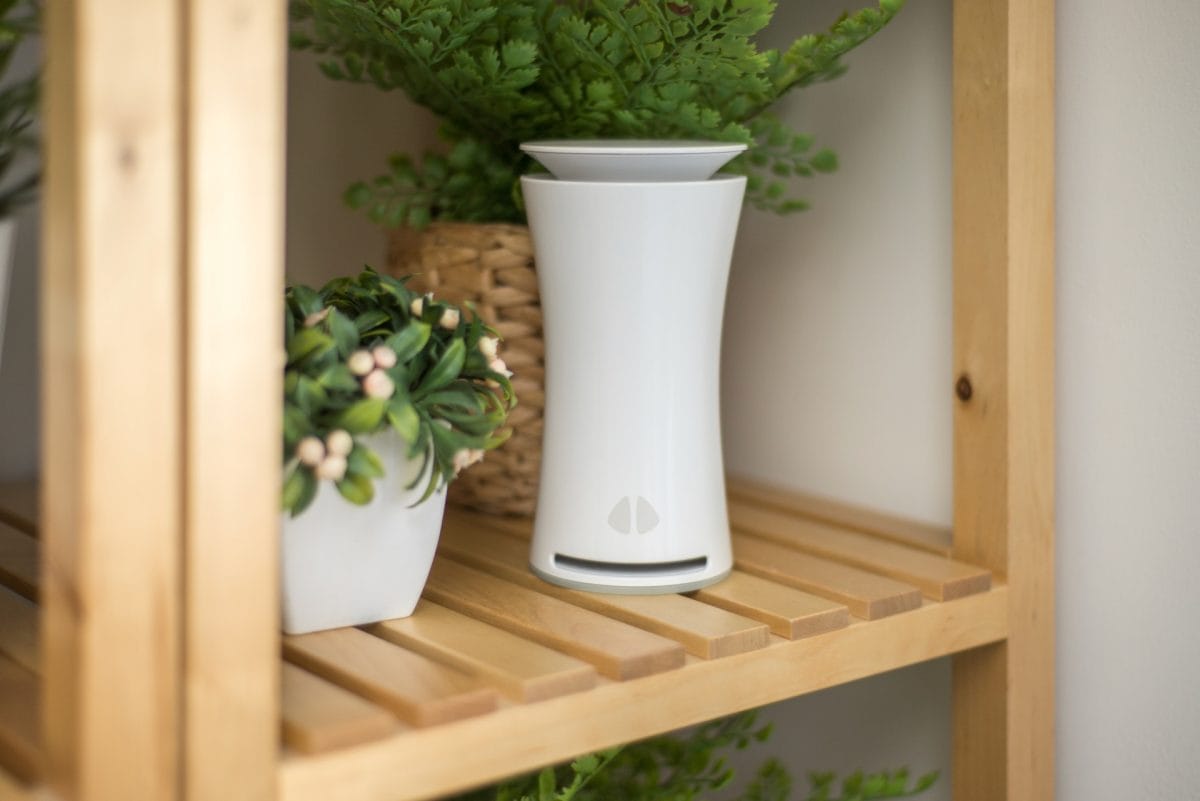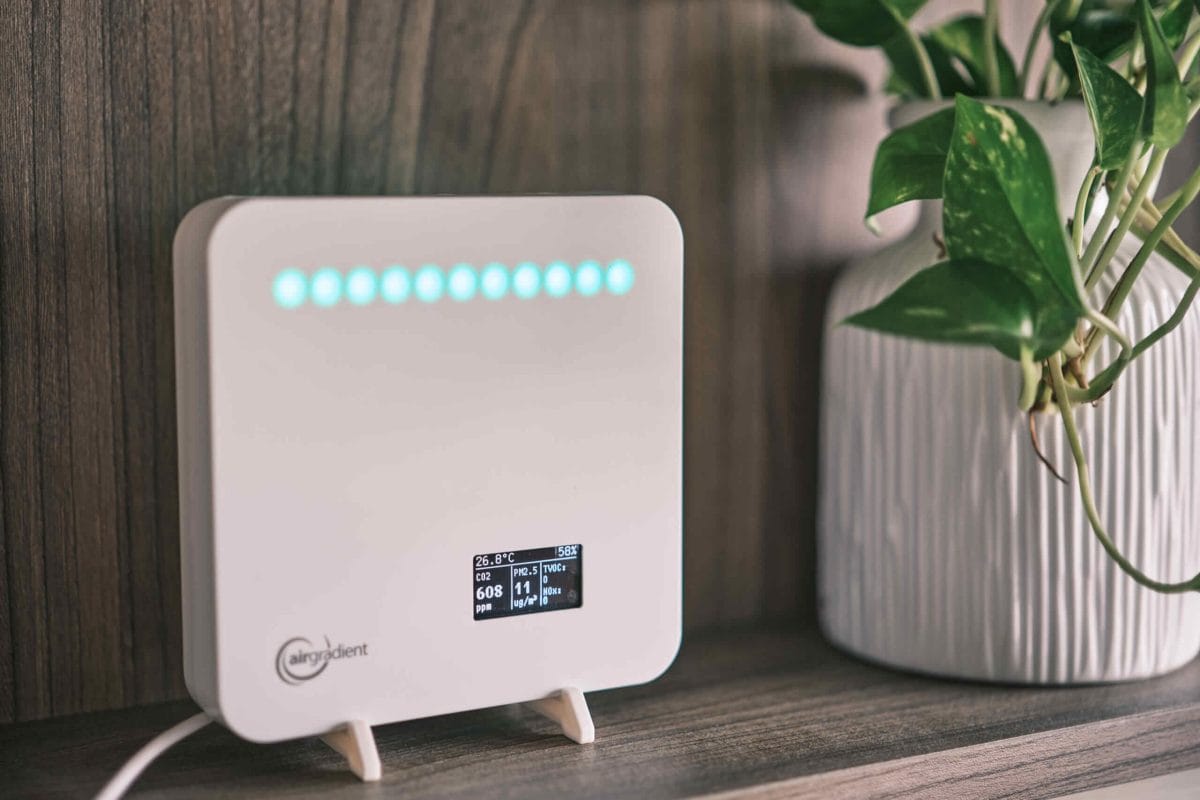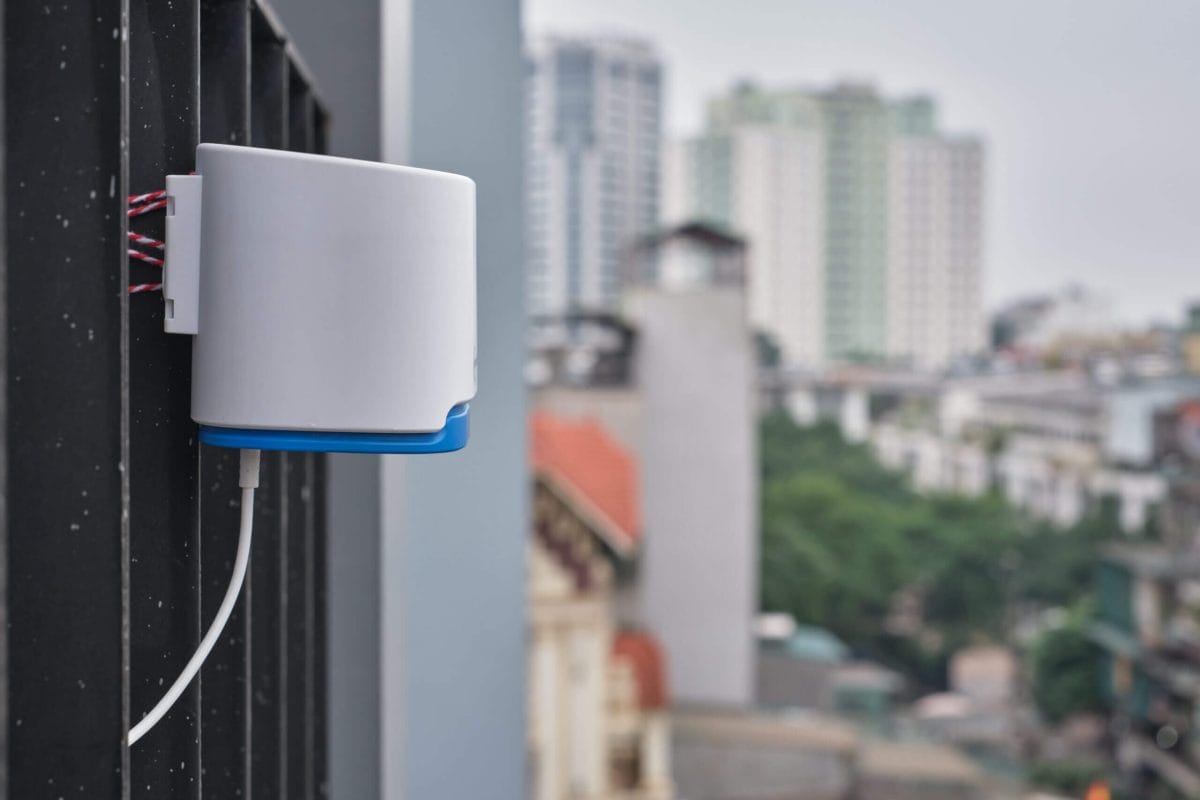During my seven-year sojourn in Seoul, I experienced the city’s dynamic culture, its rapid urbanization, and, unfortunately, its persistent air pollution problem. Air quality in Seoul oscillates, but the moments when the Air Quality Index (AQI) alarmingly crosses 150 – a level classified as ‘very unhealthy’ by the American Environmental Protection Agency – are distressingly common.
In Seoul, such air quality levels are not mere statistical anomalies. According to a report by Greenpeace and IQAir, South Korea ranked as one of the countries with the highest average annual PM2.5 concentration in 2022 among the OECD countries in the 2022 World Air Quality Report. On days when the AQI in Seoul breaches the ‘very unhealthy’ threshold, every breath taken equates to the health impact of smoking over ten cigarettes. Even on what’s considered a ‘normal’ day in Seoul, the air we breathe can have an impact akin to smoking six cigarettes.
The repercussions of air pollution extend beyond transient discomfort. In South Korea, a study found that air pollution causes an estimated 20,000+ premature deaths each year (based on the OECD data that identified 42.7 premature deaths per 100,000 people in South Korea). These figures are a grim reminder of the pervasive impact of air pollution on human health.
Among the cities in South Korea, Seoul stands out as consistently having the poorest air quality. This isn’t unexpected, as the city and its satellites house nearly half of the total population in Korea. However, while air quality across the Korean peninsula needs improvement, there’s no denying that Seoul and its surrounding cities in Gyeonggi-do need a specific focus.

Most polluted cities in South Korea. Source: Greenpeace 2022 World Air Quality Report.
Despite these concerning statistics, there is a significant gap in public awareness and perception regarding air pollution in Seoul. Many residents and visitors are either under-informed or misinformed about the severity of this issue. During my time in Seoul, I often encountered individuals who underestimated the risks or were unaware of the extent of air pollution’s impact on health.
But knowledge is power. Being aware of the air quality and understanding its implications is crucial for everyone living in or visiting Seoul. With this post, I aim to provide a comprehensive overview of Seoul’s air pollution challenge, backed by the latest statistics and research. We will explore the current state of air pollution, its health impacts, and effective measures to mitigate its effects.
For residents seeking practical solutions, such as the best fine dust masks for Seoul’s air, please refer to my detailed guide on the best fine dust masks in Korea. With that said, let’s embark on this journey to understand and navigate the air quality challenges in Seoul, armed with knowledge and the right tools for protection.
Subscribe to BreatheSafeAir
Learn about masks & respirators, keep updated with reviews, and more!
This post contains affiliate links. For more information, please refer to my affiliate disclaimer.
Information on this blog is for informational purposes only. Readers are encouraged to confirm the information herein with other sources. Furthermore, this information is not intended to replace medical advice from professionals. This website assumes no responsibility for the accuracy of the information, which is subject to change without notice.
Air Pollution in Seoul
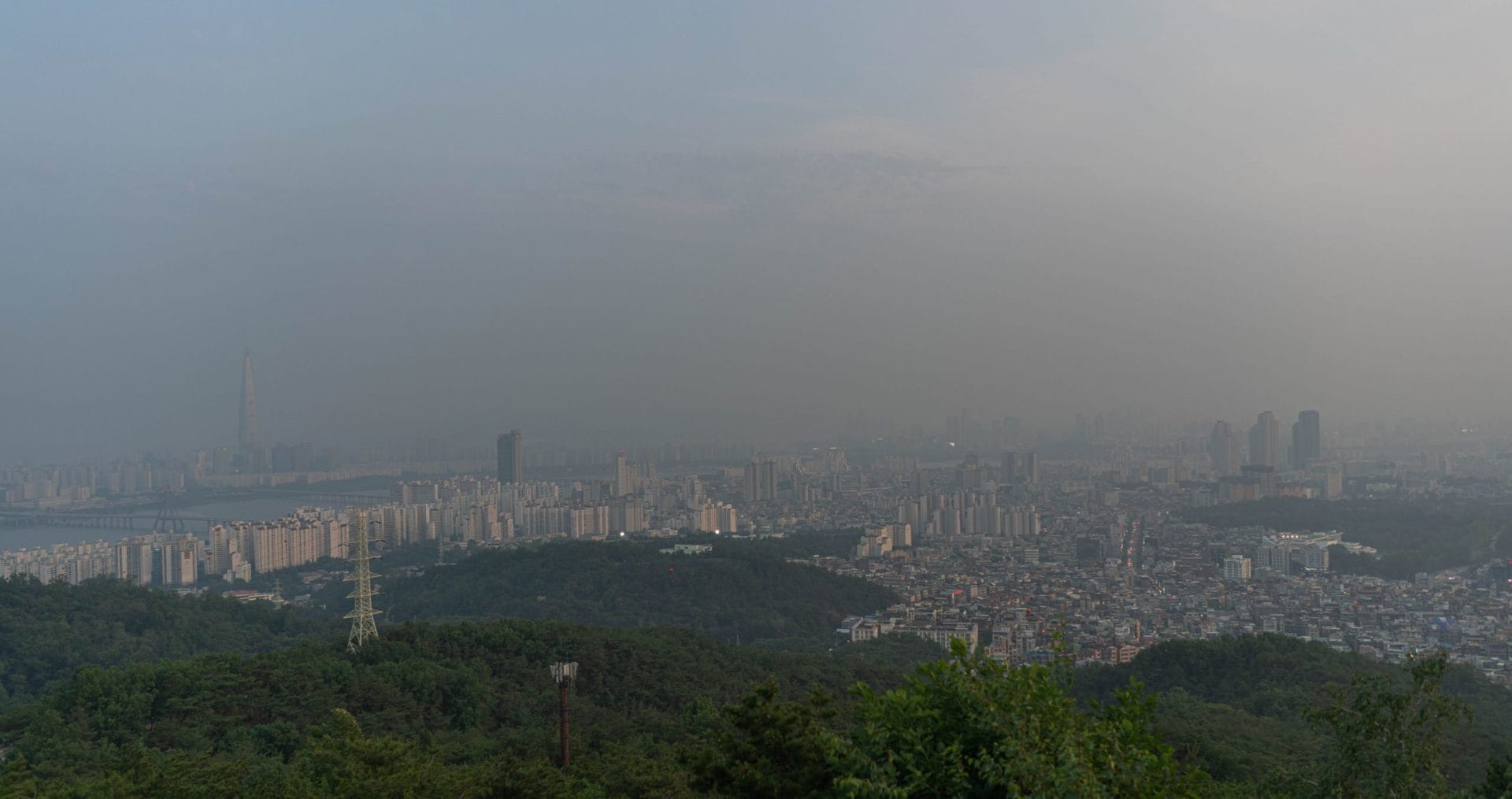
Air pollution in Seoul in late May.
While air pollution often takes a backseat in daily conversations and media coverage, its presence and impact in Seoul are significant and undeniable. Historically, the development of coal and oil power plants contributed notably to the city’s air quality issues. Although measures have been set to partially shut down these plants when particulate matter (PM2.5) levels exceed 50 µg/m3, Seoul has frequently experienced PM2.5 levels well above this threshold.
Globally, air pollution is a critical health hazard, responsible for over seven million premature deaths annually, including around 600,000 children. This staggering figure surpasses the combined annual deaths from war, murder, tuberculosis, HIV, AIDS, and malaria. In Seoul, while air pollution may not reach the extremes seen in some other global cities, it frequently surpasses World Health Organization guidelines, posing a continuous health risk.
Recent years, however, have seen a gradual improvement in air quality in Seoul. Efforts to reduce reliance on fossil fuels and implement stricter environmental regulations are contributing to this positive trend. For instance, the introduction of renewable energy sources and the gradual phase-out of coal-powered plants are steps taken by the South Korean government towards cleaner air.
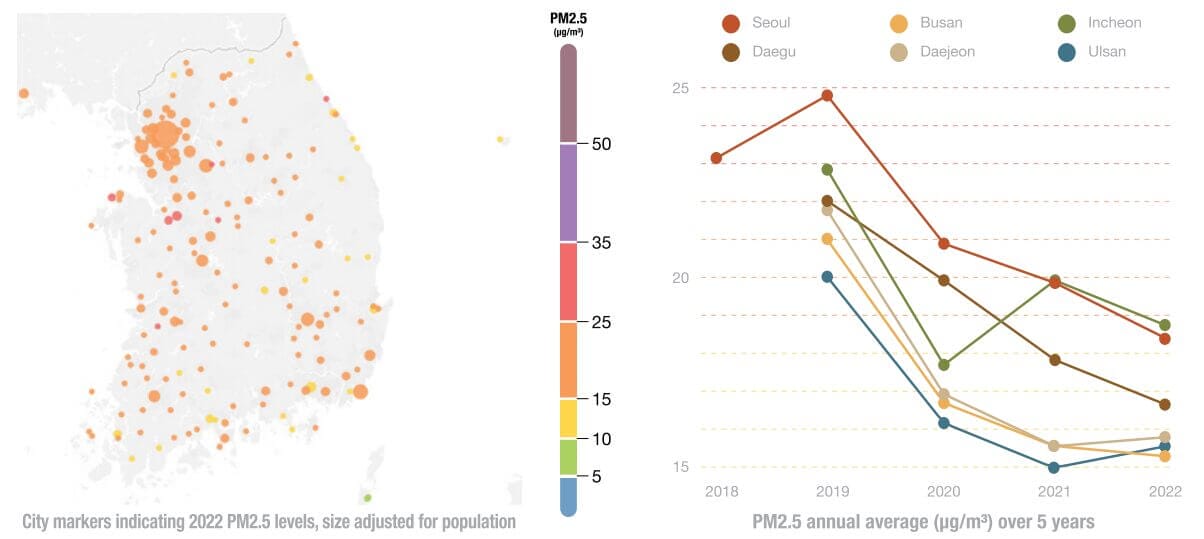
Improving air quality in Seoul as per the 2022 World Air Quality Report.
What I just said might have led to you rereading the section two or three times – is air pollution in Seoul really getting better? As a matter of fact, yes, it is. Despite the public perception, which is that air pollution in Seoul is worsening, it’s actually the opposite. However, despite the improvements, air pollution in Seoul still regularly exceeds WHO guidelines – sometimes very significantly. For this reason, it’s as important as ever to be aware of the dangers of air pollution.
Despite the increasing frequency of media reports highlighting Seoul’s air quality issues, there remains a significant gap in awareness and consideration of the impact of air pollution. This is particularly true for the expatriate community in Seoul, who may find it challenging to access information in English about the current air quality and protective measures.
This post aims to bridge that gap, providing insights into the various facets of air pollution in Seoul, the risks associated with it, and how to minimize its effects effectively. While Seoul’s air quality has shown signs of improvement, it is crucial not to underestimate the dangers of air pollution, even at lower concentrations. Staying informed and taking proactive steps are key to navigating the air quality challenges in Korea’s dynamic capital.
What Causes Seoul Air Pollution?
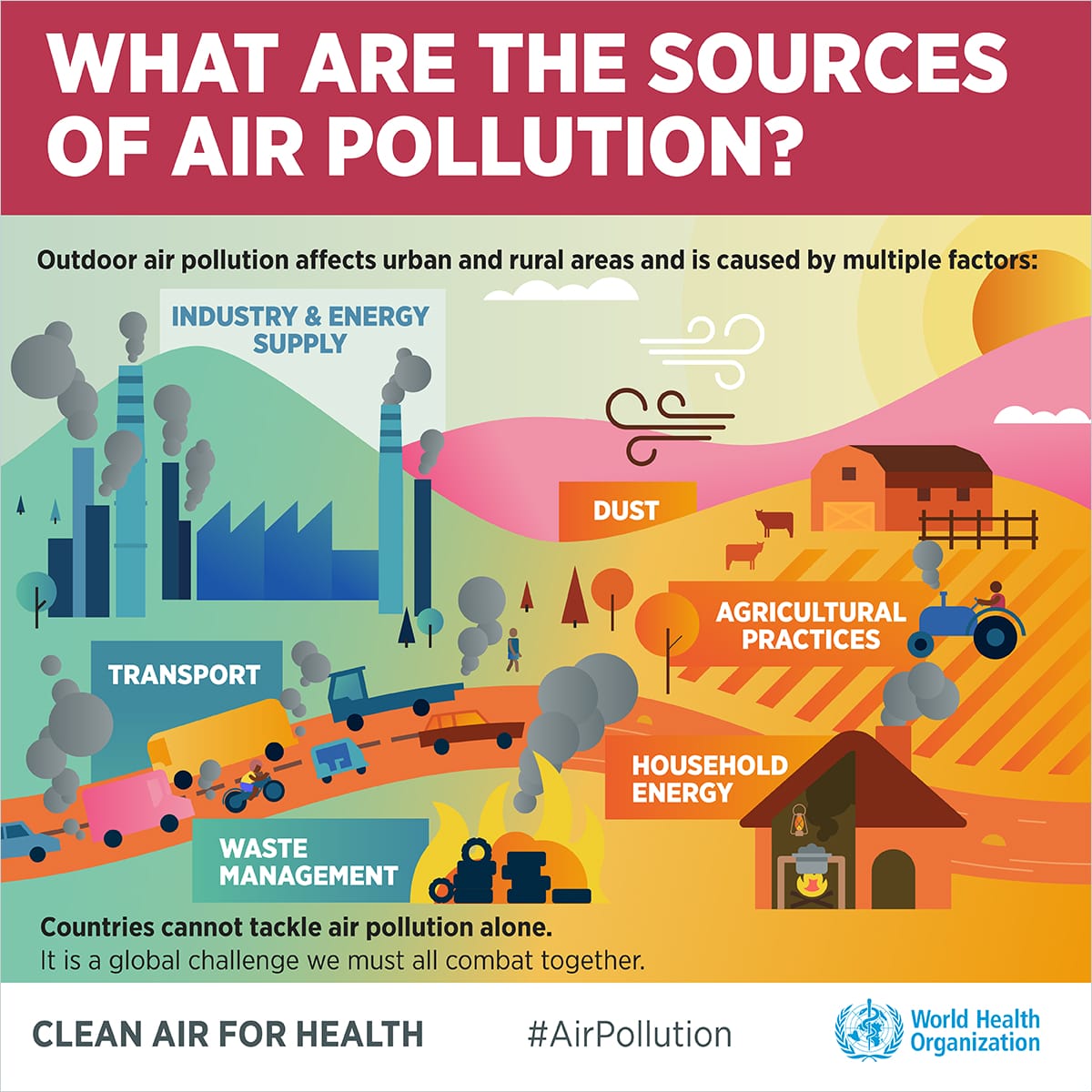
The debate surrounding the sources of air pollution in Seoul has long been a subject of contention, often mired in misunderstandings and geopolitical nuances. A prevalent misconception, particularly among residents and policymakers, is the attribution of the majority of Seoul’s air pollution to transboundary pollution from China.
This belief has been challenged by recent scientific studies, including comprehensive research by the Earth Science Project Office (ESPO) at NASA. Their findings suggest that a significant portion of the air pollutants in Seoul originate domestically, contradicting the widespread notion of external culpability. While the research is in Korean, it indicates that only 34% of the fine dust in Seoul’s Olympic Park comes from China. Other studies corroborate this percentage, indicating that 30-50% of Seoul’s air pollution is from China, but the remaining 50-70% is produced domestically.
The narrative that external factors predominantly contribute to Seoul’s air pollution problem is not entirely without basis. In the past, studies have demonstrated the transboundary movement of pollutants from China to South Korea, especially during specific seasons when the westerly winds are strongest. These studies highlighted the significant influence of residential biomass and coal-burning activities in China on Seoul’s air quality. However, this perspective has evolved with new research emphasizing the substantial role of domestic sources.
Seoul, a bustling metropolis with a dense population and intense industrial activity, faces a complex array of internal air pollution sources. The primary contributors to air pollution in Seoul are vehicular emissions, industrial activities, energy production, domestic heating, and construction and road dust. Let’s have a look at these in a bit more detail.
Key Domestic Sources of Air Pollution in Seoul:
- Vehicle Emissions: Seoul, a densely populated and highly urbanized city, sees a significant contribution to air pollution from vehicular emissions. The exhaust from cars, buses, and trucks, particularly diesel vehicles, is a significant source of nitrogen oxides (NOx) and particulate matter (PM2.5).
- Industrial Activities: Industrial processes, particularly those involving fossil fuels, contribute substantially to air pollution in Seoul. Factories and plants in and around the city release various pollutants, including sulfur dioxide (SO2) and volatile organic compounds (VOCs).
- Energy Production: Coal-fired power plants and other energy-generating facilities within South Korea contribute to the levels of sulfur oxides, nitrogen oxides, and particulate matter in the air. While there have been efforts to reduce reliance on coal, it remains a significant source of air pollution.
- Domestic Heating: During the colder months, the use of heating systems, which often rely on fossil fuels, contributes to indoor and outdoor air pollution. This is particularly relevant in densely populated urban areas like Seoul.
- Construction and Road Dust: Urban development and construction activities in Seoul can release large amounts of dust and particulate matter into the air, worsening air quality.
This complex interplay of domestic sources underscores the need for a multifaceted approach to addressing Seoul’s air pollution. While external factors, such as transboundary pollution, cannot be entirely discounted, the focus must increasingly shift towards mitigating the impact of local sources. Efforts to improve air quality in Seoul require a combination of policy measures, technological advancements, and public awareness campaigns aimed at reducing emissions from vehicles, industrial activities, energy production, and urban development.
In conclusion, understanding the sources of air pollution in Seoul is crucial for developing effective strategies to combat it. The city’s air quality issues are predominantly fueled by a variety of domestic sources, each contributing in its own way to the overall pollution levels. Tackling these sources through concerted efforts involving government regulations, industry participation, and public awareness is essential for ensuring a cleaner, healthier air environment for the residents of Seoul.
Who is Responsible?
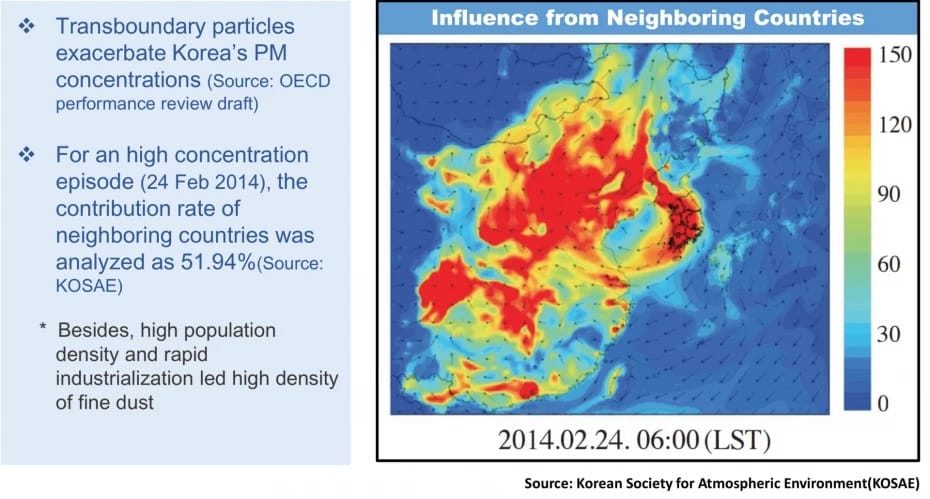
Influence from Neighbouring Countries by KOSAE
Since I know it’s a big topic in Korea, I want to expand on the question, ‘Who is responsible for the poor air quality in Seoul?’ Understanding the origins of air pollution in Seoul is crucial for formulating effective strategies to combat it. This question has sparked considerable debate, especially regarding the relative contributions of domestic sources versus transboundary pollution, primarily from China.
A significant development in this area is recognising that a substantial portion of Seoul’s air pollution is domestically generated. Contrary to the common belief that transboundary pollution from China is the predominant source of fine particulate matter (PM2.5) in Seoul, recent studies suggest that domestic sources play a larger role than previously thought. One key study using a 3-D global chemistry model (GEOS-Chem) conducted source attribution of PM2.5 in Korea from international and domestic emissions, providing insights into the proportion of pollution originating within the country.
This study indicated that the percentage of PM2.5 from transboundary pollution varies greatly depending on the season. In winter, contributions from China were far greater at around 60% (during January and February). However, these contributions drop greatly in summer, and in August, only 20% of PM2.5 contributions are due to transboundary pollution from China. Previously, reports indicated that as much as 70% of Seoul’s annual PM2.5 levels were due to China. This recent research concludes that a significantly lower proportion is attributable to transboundary pollution.
Many other studies further support this fact, and while they sometimes differ in exact percentages, it’s largely agreed upon that between 30-50% of air pollution in Seoul is due to pollutants being blown over the ocean from China. However, the remaining 50-70% of air pollution in Seoul is produced domestically.
Despite the growing understanding of the significant role of domestic sources, it’s essential to recognize that transboundary pollution still contributes to Seoul’s air quality issues, especially on days with heavy pollution. Historical data and some studies have highlighted the impact of emissions from China on South Korea’s air quality, particularly on days with unfavourable meteorological conditions that facilitate the long-range transport of pollutants.
In conclusion, while domestic sources contribute significantly to air pollution in Seoul, the impact of transboundary pollution, particularly from China, cannot be entirely discounted. This complex interplay underscores the need for comprehensive air quality management strategies that address both local and regional factors. Developing effective solutions requires a nuanced understanding of the various sources of pollution and their relative contributions to Seoul’s air quality.
Real-World Testing
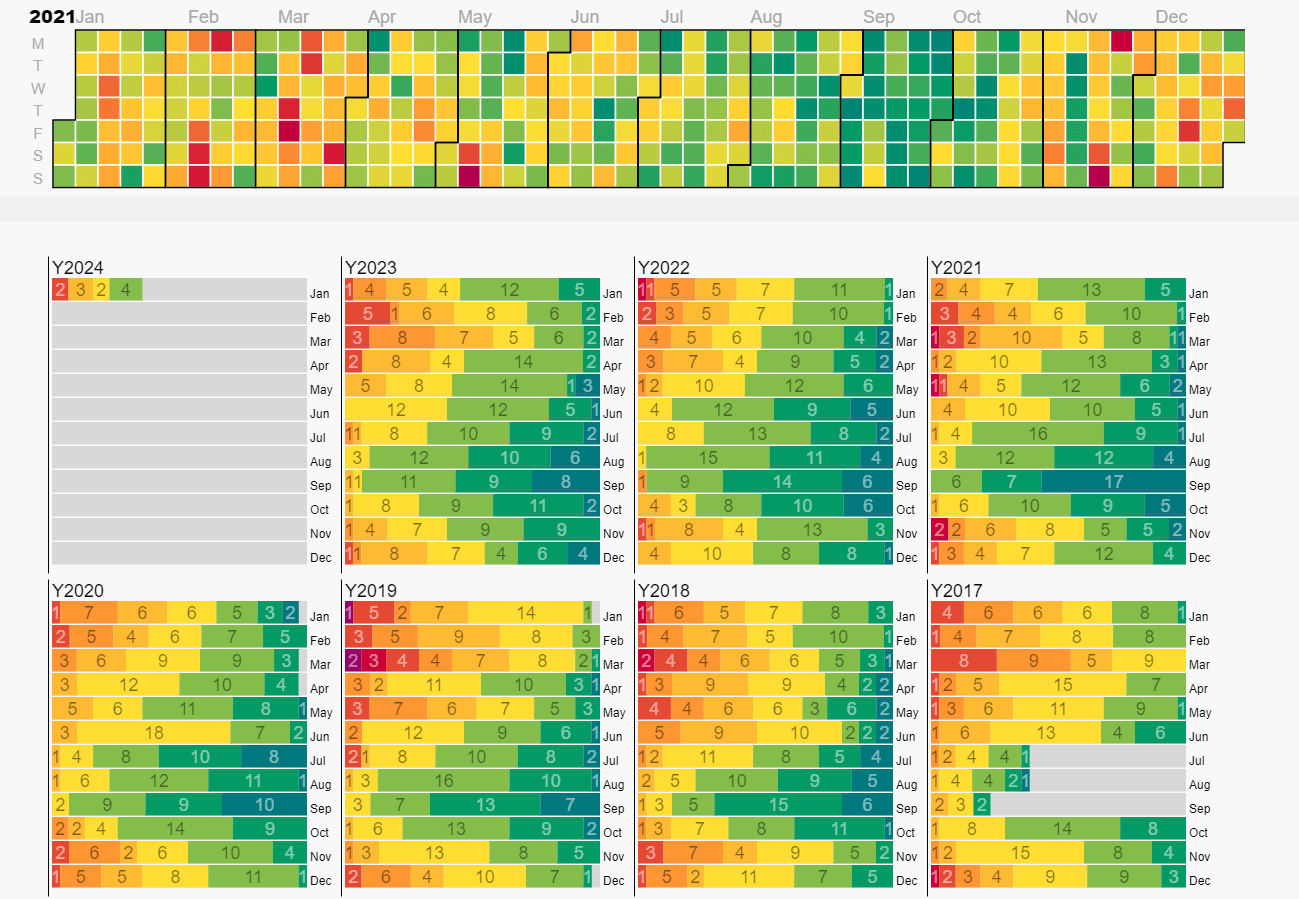
Seoul air pollution from 2017-2023. AQICN.
In my quest to understand the air pollution in Seoul beyond just numbers and reports, I turned to a portable air pollution monitor from Plume Labs. This handy device has been within 5-10% of official pollution levels in my tests – unfortunately, it’s since been discontinued, and I now recommend the AtmoTube PRO instead. Using the stricter Plume AQI, I found that the colour-coded warnings shifted to yellow, orange, and red more quickly than with the Korean Government’s AQI, signalling that the air was often more polluted than official sources indicated.
Throughout early June, I carried the monitor with me as I navigated Seoul’s streets. Time and again, the readings were higher than what was reported by city monitors, especially when I was close to the congested roads where traffic was relentless. It’s well-known that heavy traffic contributes to air pollution, but experiencing it at street level, where the exhaust fumes are most concentrated, really drove home the point.
As a photographer, I frequently set out to capture Seoul’s cityscapes. But too often, my excursions were met with a veil of haze that made it difficult to capture the city’s beauty. Air pollution was not just an abstract concept found in data; it was a visible, sometimes stifling blanket that obscured the skyline and the vibrancy I was looking to photograph. The haze was a constant reminder of the city’s battle with pollution – a battle that became personal as it intruded upon my photographic pursuits.
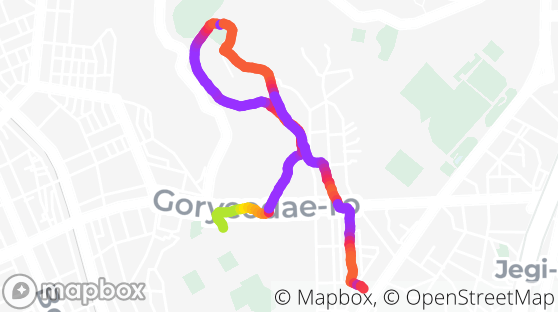
Air pollution levels on my walk around Korea University.
On one particular evening, the air was thick around Korea University. Despite an official AQI of 136, the monitor showed far worse air quality, confirming the reality that the pollution was much more severe than I had anticipated. It was a stark example of how localized pollution can be and how official readings don’t always tell the full story.
As someone who has lived in and photographed Seoul, I’ve seen the impact of air pollution on daily life and the environment. While the city has made strides in improving its air quality, the journey is ongoing. The snapshots of haze and the colours on my monitor are reminders that Seoul and Korea as a whole still have a long way to go to improve air quality.
Air Pollution Seasonality
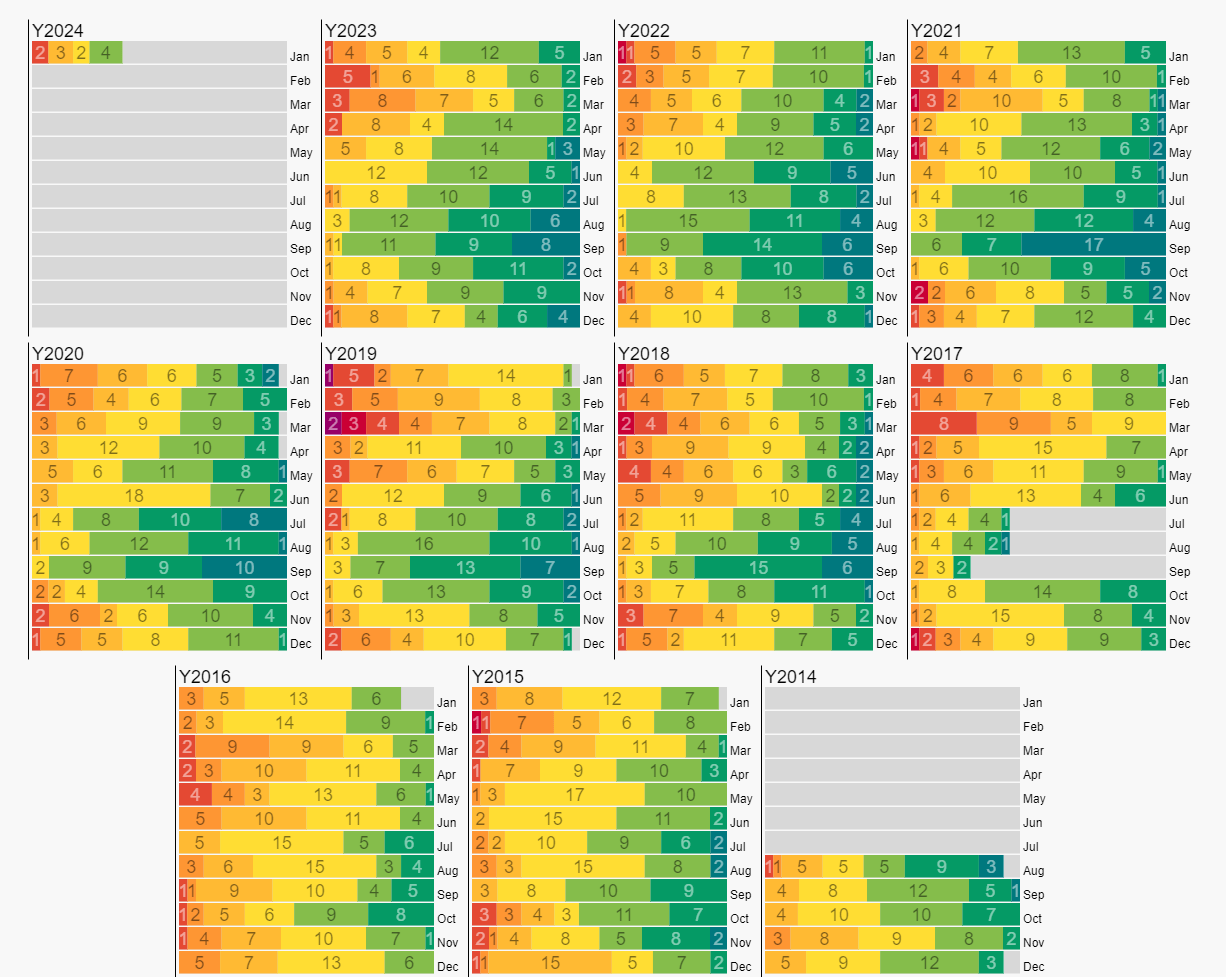
Seasonality plays a significant role in Seoul’s air quality, leading to fluctuations in pollution levels throughout the year. The air pollution in Seoul is not consistent and tends to worsen during specific months, mainly due to changing weather conditions, variations in local emissions, and regional pollution transport patterns.
During the spring, particularly from March to May, Seoul experiences a phenomenon known as “yellow dust,” which is attributed to strong winds carrying sand and dust from the deserts of Mongolia and northern China. This dust can pick up industrial pollutants and particulate matter as it travels, worsening the air quality when it settles over the city. The springtime also sees an increase in secondary organic aerosols, which are air pollutants formed from the reaction of sunlight with primary pollutants like volatile organic compounds emitted from traffic and industry.
In contrast, the summer months tend to see some improvement in air quality. This improvement is partly due to the rainy season, which can wash away airborne pollutants, although ozone levels can peak during this time. Ozone is a secondary pollutant formed by the reaction of sunlight with nitrogen oxides (NOx) and volatile organic compounds (VOCs). Therefore, despite the reduction in particulate matter, the presence of sunlight and the ongoing emissions from vehicles and industrial activities contribute to higher ozone concentrations, which are particularly harmful on hot, sunny days.
The transition into fall generally brings cleaner air to Seoul. The cooler temperatures and less intense sunlight reduce the formation of ground-level ozone, and the less frequent occurrence of stagnant air conditions allows pollutants to disperse more easily. However, the level of particulate matter may start to rise again as the use of heating systems increases with the cooler weather.
Winter brings its own set of challenges for air quality in Seoul. During this season, the city often experiences temperature inversions, where a layer of warm air traps pollutants close to the ground, leading to higher concentrations of fine particulate matter (PM2.5 and PM10) and other pollutants like nitrogen dioxide (NO2). This is exacerbated by increased emissions from heating systems and the fact that cold air does not rise and disperse pollutants as effectively as warm air. Furthermore, the low temperatures can enhance the stability of the atmosphere, preventing the vertical mixing of air and leading to the accumulation of pollutants near the surface.
Moreover, the analysis of long-term air pollution trends in Seoul shows a strong seasonal pattern in the levels of NO2 and O3, with NO2 peaking during winter and O3 during summer. This is largely due to NO2 being a product of fuel combustion from vehicles and power plants and O3 being generated by the reaction of NO2 with sunlight.
The seasonal variations in air pollution are a clear indication that efforts to improve air quality in Seoul cannot be uniform throughout the year. Instead, they must be tailored to address the specific challenges presented by each season. For example, policies to reduce traffic emissions might be prioritized during winter to mitigate the impact of temperature inversions, while strategies to control ozone precursors could be emphasized in the summer months.
Effects on Health

Health effects of air pollution in Seoul without regulation and with regulation.
The health effects of air pollution in Seoul are a growing concern for its residents and health professionals alike. Studies have shown that the city’s air quality has direct implications on the health of its population, leading to both chronic and acute health issues. To provide a comprehensive overview, let’s delve into the statistics and discuss the general health effects of air pollution.
In Seoul, research suggests that air pollution significantly impacts mortality related to circulatory, respiratory, and skin diseases. A study assessing the severity of air pollution impacts on mortality in Seoul’s districts found that pneumonia had a strong association with air pollution, with particulate matter with an aerodynamic diameter of 10 μm or less (PM10) posing serious health risks. It was shown that excessive PM10 concentration led to a continuous increase in mortality due to respiratory diseases—approximately a 1.50-fold increase over ten years.
Moreover, the average South Korean can expect to lose 1.4 years of life expectancy because air quality fails to meet the World Health Organization’s (WHO) guideline for fine particulate pollution (PM2.5). In Seoul, which has the nation’s worst pollution, residents may live 1.7 years less if the city’s high pollution levels persist compared to if the WHO guideline was met.
Air pollution has caused an estimated 7,700 deaths in Seoul in one year (and more than double that in Korea), emphasising the issue’s severity. These deaths are often due to diseases such as stroke, heart disease, lung cancer, chronic obstructive pulmonary disease (COPD), and respiratory infections like pneumonia.
General health effects of air pollution include aggravating asthma, reducing lung function, causing lung cancer, and leading to cardiovascular issues. Particulate matter, especially PM2.5, can penetrate deep into lung tissue and enter the bloodstream, causing inflammation and exacerbating health conditions. Ozone, another harmful pollutant, can cause breathing problems, reduce lung function, and aggravate asthma and other lung diseases. Nitrogen dioxide and sulfur dioxide can also affect the respiratory system and exacerbate heart diseases.
The dangers of air pollution go beyond the well-documented respiratory and cardiovascular consequences; recent studies have begun to shed light on its insidious effects on mental health, including depression and mood disorders. In Seoul, a bustling metropolis that struggles with significant air pollution, the implications for mental well-being are particularly pertinent.
Recent studies in South Korea, alongside other countries, have reported that short-term increases in air pollution are linked to an elevated risk for suicide, symptoms of depression and anxiety, and emergency department visits for mental health disorders in adults. For instance, the association between particulate matters such as PM2.5, PM10, and depression has been observed in the elderly population, underscoring the need for a broader understanding of air pollution’s impact on mental health across different age groups.
Long-term exposure to air pollutants has also been associated with subjective stress, depressive disorders, and decreased quality of life. A study that included 124,205 adults from the Korean Community Health Survey in 2013 investigated the association between long-term exposure to ambient air pollution and subjective stress, depressive disorders, and suicide. The results indicated a significant correlation between pollution exposure and the mental health indicators assessed.
These findings are in line with global research that has begun to associate exposure to environmental pollutants, including air pollution, with increased prevalence and severity of mental disorders. One of the key pollutants, PM2.5, has been shown to penetrate the brain’s blood barrier, potentially leading to neuronal degeneration and contributing to the earlier onset of neurodegenerative diseases. Furthermore, these smaller particles have been linked to mood disorders, depression, and even suicide, revealing a disturbing connection between the air we breathe and our mental well-being.
In summary, the health effects of air pollution in Seoul are significant and wide-ranging. It affects all residents but particularly harms vulnerable groups such as children, the elderly, and those with pre-existing health conditions. The statistics and studies underline the importance of continued and strengthened efforts to improve air quality and reduce the health burden of air pollution in Seoul.
Understanding AQI in Seoul
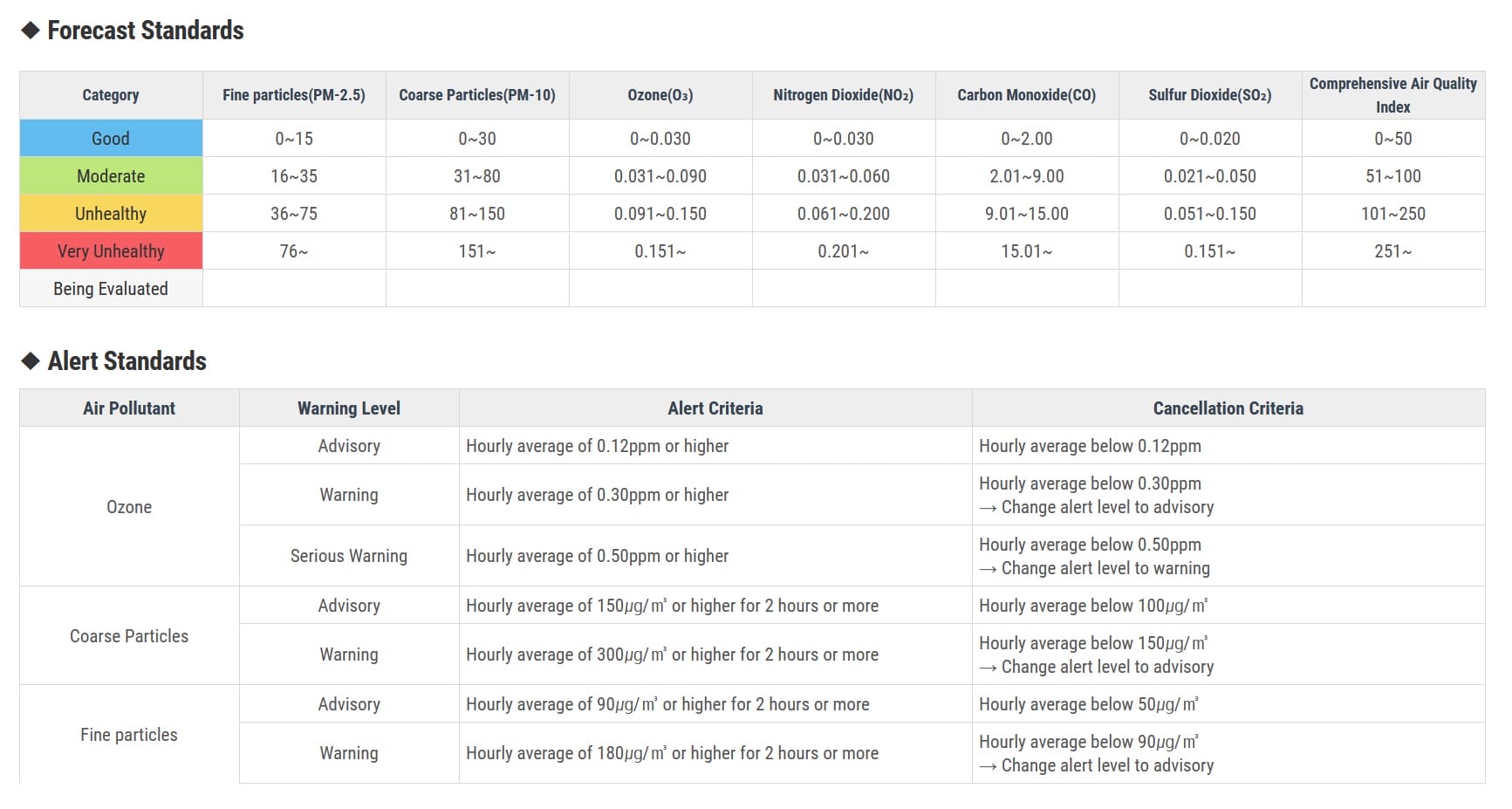
Air pollution standards as given by the Seoul government.
Air quality indexes (AQIs) are scales used to rate overall air pollution by combining the concentrations of various pollutants. Above, I’ve provided a scale showing how the Seoul Metropolitan Government (and Korea overall) judge the air quality index.
The issue is that many different AQI scales are used worldwide. For example, India uses the NAQI. On the other hand, the U.S. EPA is used by many countries and is generally considered the ‘go-to’ air quality index. If you’re using an app like IQAir’s AirVisual, it will likely default to this AQI measurement (although this can often be changed in the settings). The issue here is that since each scale is different, they can’t be directly compared, and some are more conservative, while others can be quite lenient.
On the one hand, this makes sense as having scales tailored for each country means they can be weighted for prevalent pollutants in that region. However, it also causes confusion as the AQI you see on a website from the Korean government (and many other domestic websites) can be quite different from what you’ll see on an app or website that uses the U.S. EPA AQI.
While I don’t want to dive into every difference between the two scales here (I could dedicate a whole article to that!) I do want to point out a few differences. Below is an image of the U.S. EPA AQI that shows what pollutant concentrations fit into each overall AQI category. Please refer to this document to see the unhealthy, very unhealthy, and hazardous criteria.
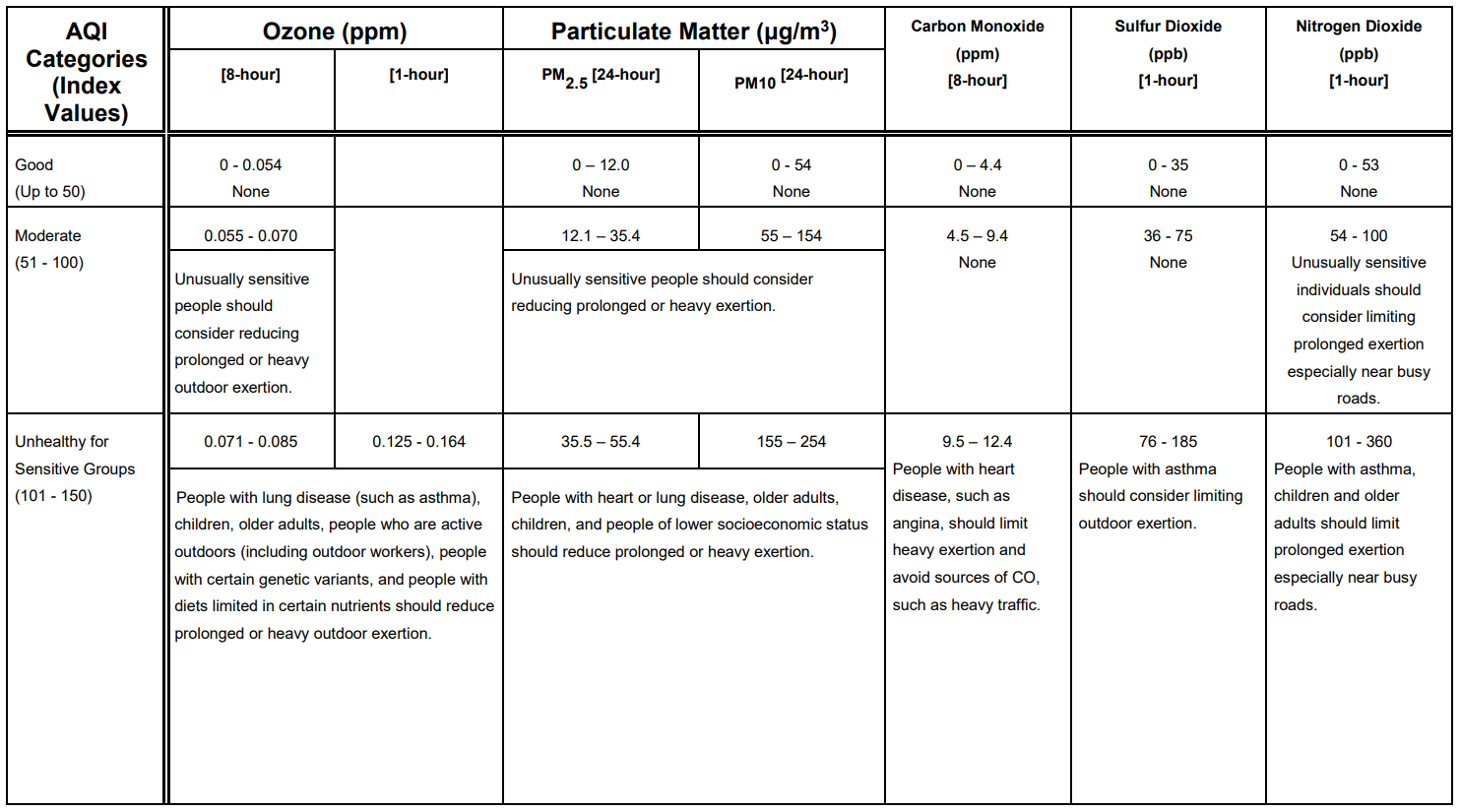
U.S. EPA good, moderate, and unhealthy for sensitive groups criteria.
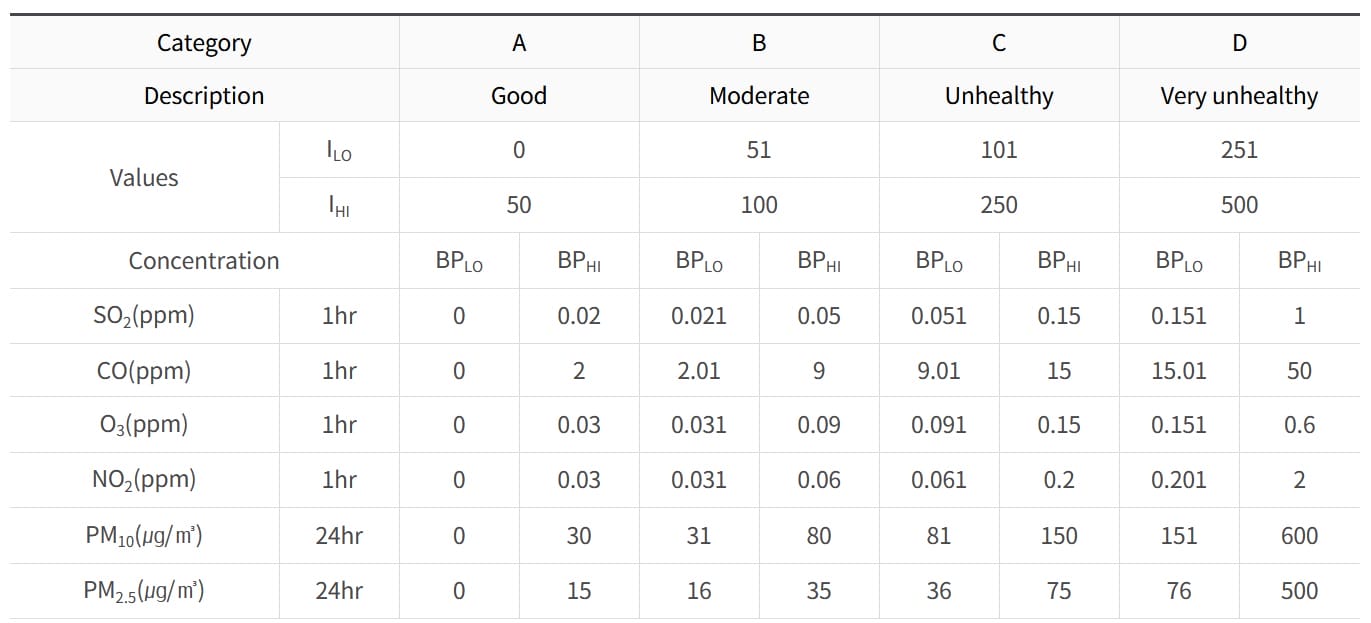
Comprehensive Air Index (CAI) – AirKorea.
The CAI (the AQI scale used in Korea) has four tiers, whereas the EPA’s scale is divided into six tiers. These two extra tiers are added at the high end (100+ AQI), and the Korean CAI scale is less descriptive when the air quality is very poor. Interestingly, the CAI is more stringent with its ‘good’ air quality level than the EPA AQI scale. However, at the ‘moderate’ levels, the scales become more similar.
Again, it’s important to note that the Korean scale doesn’t provide the extra tiers that the EPA does. This means that the ‘very unhealthy’ tier of the Korean CAI covers a massive spread. For example, ‘very unhealthy’ can mean anything from 151μg/m³ to 600μg/m³ of PM10. For PM2.5, this tier can mean anything from 76μg/m³ to 500μg/m³ – a vast difference. Luckily, the air in Seoul is rarely this bad.
Both scales have advantages, and at the lower end, both are quite similar. The key here is to know that there are different scales, and you should know which one you use. If you’re interested in learning more about the EPA AQI, please refer to my article on AQI.
Good Resources to Check Pollution in Seoul
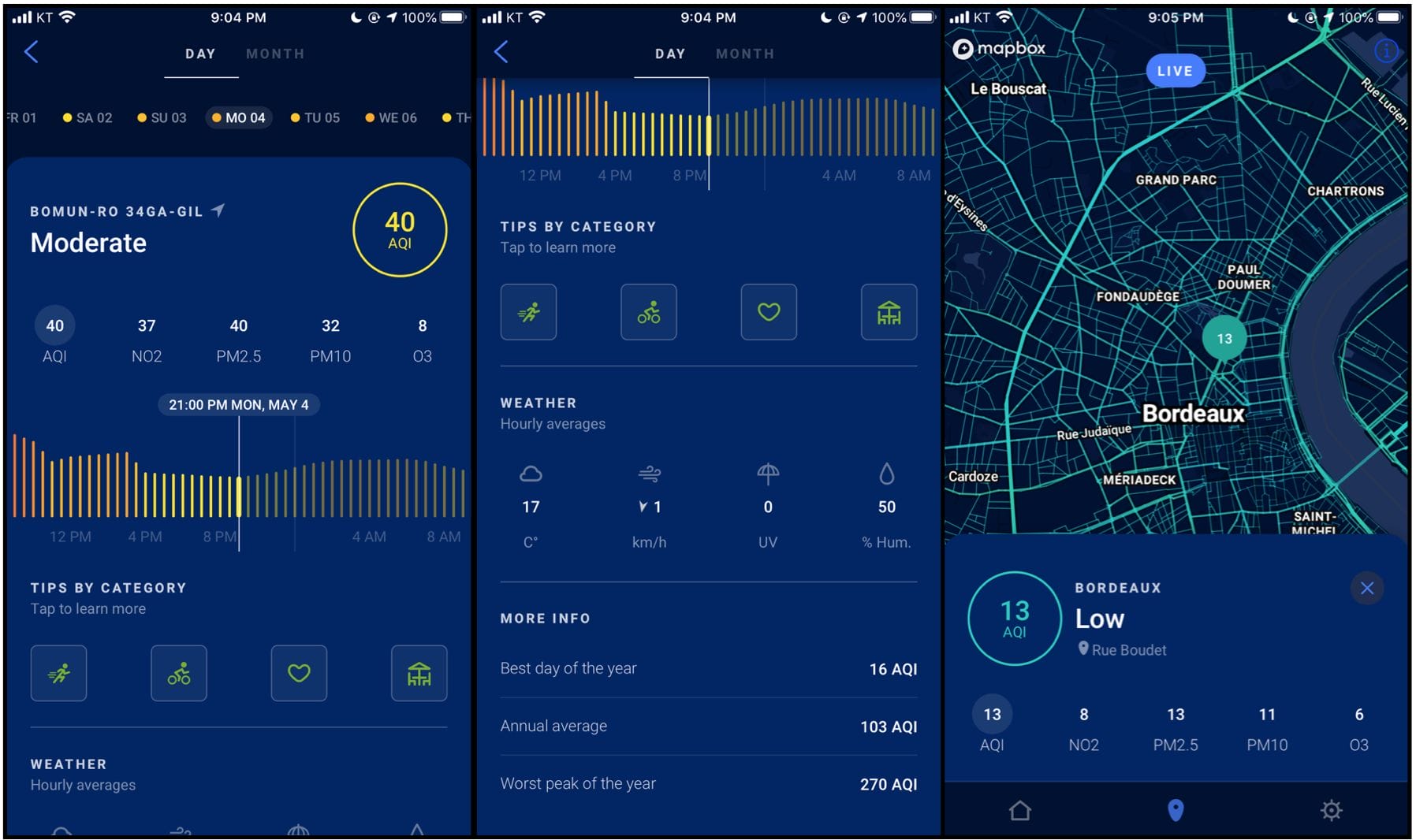
I recently did a review of the best AQI apps.
Keeping track of air quality is essential, particularly in urban areas like Seoul, where daily conditions can vary significantly. Regularly checking the air quality index (AQI) is not just about comfort – it’s a proactive measure for maintaining your health, even if you’re stepping out briefly. The impact of air pollution is cumulative, and every effort to minimize exposure can contribute to long-term well-being.
For residents and visitors in Seoul, there are several user-friendly resources available for monitoring air pollution levels. Two prominent websites that offer up-to-date information are Cleanair.Seoul and Air Korea. Despite being primarily in Korean, they provide a straightforward interface where checking the air quality is as simple as identifying the colour code for your specific district. Of course, as we’ve just discussed, remember that both of these websites use the Korean CAI system,
The Seoul Metropolitan Government also offers its own air quality monitoring service. However, compared to the AQICN platform, it might appear somewhat constrained. I prefer using AQICN because it provides a comprehensive view, including individual measurements of all the pollutants contributing to the overall AQI score. This platform offers a more granular look at the air quality, detailing the specific levels of various pollutants like PM2.5, PM10, ozone, and nitrogen dioxide, among others.
Beyond these websites, many apps and digital platforms are at your disposal, offering detailed AQI reports. These tools don’t just give an overall air quality score; they dissect it further into individual pollutant categories, providing a deeper understanding of what’s in the air you’re breathing. For added convenience, these services often come with mobile applications compatible with iOS and Android devices, allowing you to check the air quality swiftly and make informed decisions about outdoor activities, protective measures, and health precautions. Please check out this post if you’re interested in my app recommendations.
In the end, while it might seem tedious, the daily habit of checking the AQI can have significant health benefits. In a city where air quality can shift rapidly due to various environmental and man-made factors, staying informed is your first line of defence against the invisible threat of air pollution.
Protecting Yourself from Air Pollution in Seoul
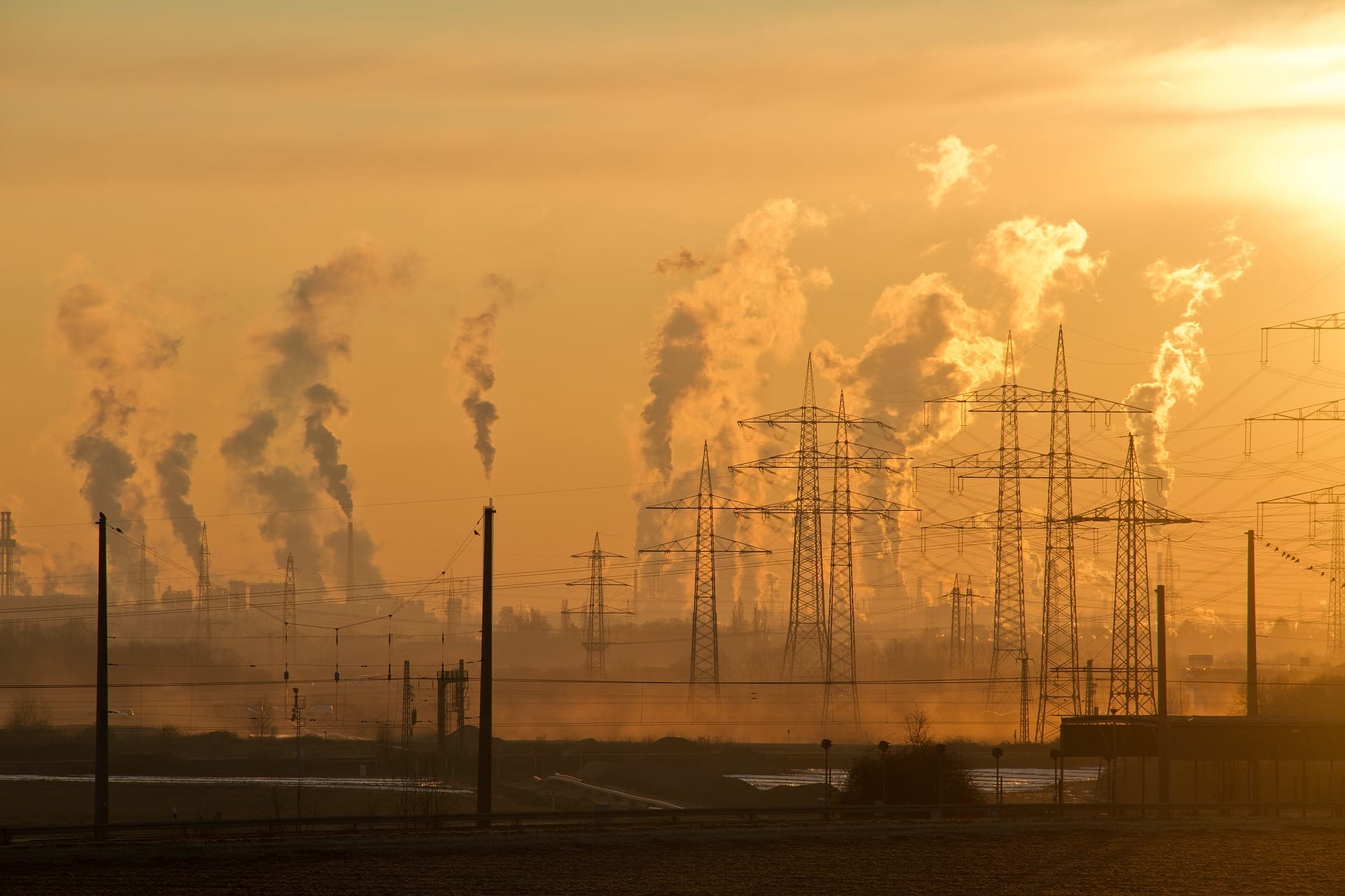
Acknowledging air pollution as a persistent environmental challenge is crucial, yet it’s equally important to recognize that its effects can be mitigated. Although it’s impossible to avoid exposure to air pollution altogether, there are effective strategies to lessen its impact on our health, both when we’re indoors and outdoors.
In this section, we will explore various practical measures to shield ourselves from the harmful effects of polluted air. However, it’s critical to note that these protective methods, particularly mask use, have limitations. To ensure optimal protection, you must be fit-tested with a high-performance respirator such as an N95. To further ensure protection, a half-face respirator might be the way to go on the days with the worst air pollution.
Furthermore, it’s a common misconception that being indoors shields you entirely from air pollution. On the contrary, indoor air quality can sometimes be more compromised than outdoor air due to various pollutants that originate from within the home. Therefore, it’s essential to implement indoor air quality management practices as part of your daily routine.
From air purifiers to masks, I’ll delve into a few solutions designed to purify the air you breathe inside your home. Simultaneously, we’ll discuss the importance of selecting and properly using masks and other protective gear to guard against outdoor air pollutants. Combining these indoor and outdoor strategies can create a comprehensive approach to reducing your exposure to air pollution and safeguarding your health.
When Do You Need a Fine-Dust Mask?
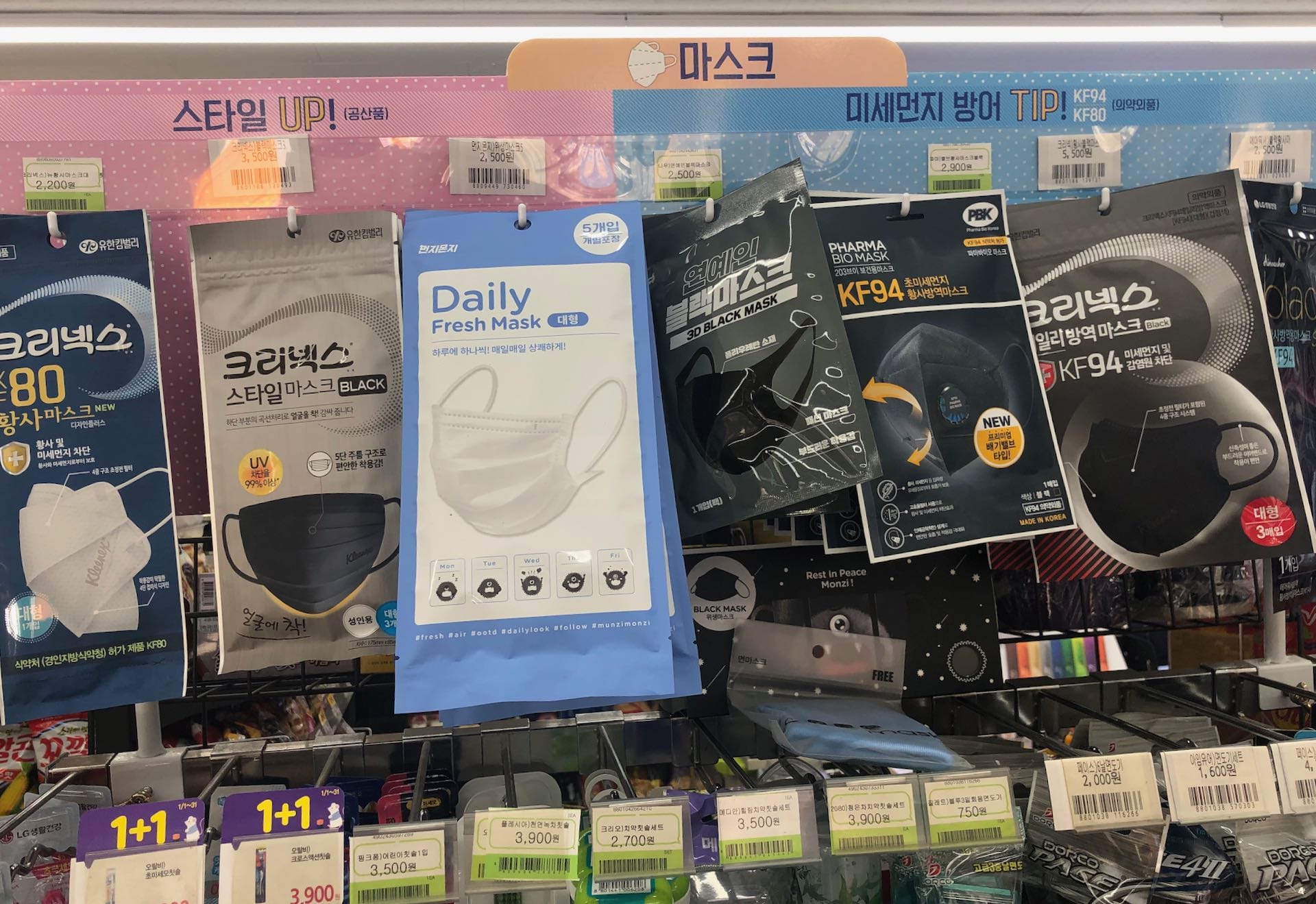
Navigating the varying guidelines for air quality and deciding when to wear a fine dust mask in Seoul can be challenging. Different organizations and countries set different thresholds for what they consider ‘safe’ levels of air pollution, and these differences can be quite stark.
The World Health Organization (WHO) provides guideline values for air quality that many consider stringent:
- Fine Particulate Matter (PM2.5): 5 μg/m³ as an annual mean and 25 μg/m³ for a 24-hour mean.
- Coarse Particulate Matter (PM10): 15 μg/m³ as an annual mean and 45 μg/m³ for a 24-hour mean.
The WHO also acknowledges that no level of fine dust pollution can truly be deemed ‘safe,’ asserting that the only genuinely safe level is zero. This makes it difficult to pinpoint an exact AQI rating at which wearing a mask becomes necessary, especially since the WHO guidelines for long-term exposure are often surpassed in Korea.
The general belief is that an AQI rating of 0-50 is considered ‘healthy.’ However, this can vary greatly depending on individual sensitivity and health conditions. For instance, I, being asthmatic, start to experience breathing difficulties when the AQI exceeds 75. Others might only feel the need to wear a mask when the AQI surpasses 100 or even 150.
Different governments recommend wearing masks at varying levels of air pollution. However, it’s important to remember that air pollution has an impact even at low levels, and there is no universally agreed-upon threshold for when it becomes significantly hazardous.
For those who wish to stay on the safer side, adhering to the WHO guidelines would be prudent. This means wearing a mask whenever PM2.5 levels exceed 25μg/m³. Yet, in a city like Seoul, where this level is frequently surpassed, such vigilance can mean wearing a mask quite regularly. Ultimately, the decision of when to wear a mask should be based on personal health considerations, sensitivity to air pollution, and the prevailing air quality conditions.
One final note – I only discussed PM2.5 and PM10 in this section, as masks and respirators aren’t effective against gases (unless otherwise specified). Therefore, while air pollution is a combination of many different pollutants, the focus of mask-wearing is on particulate matter.
High-Risk Groups
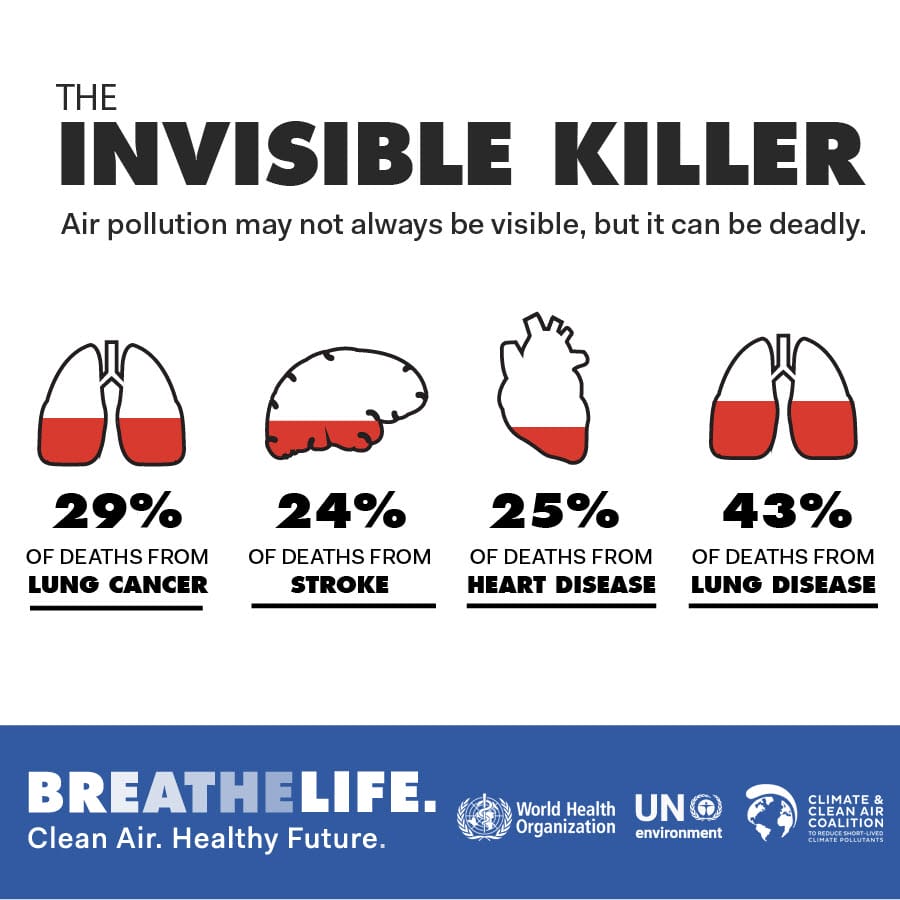
In Seoul, as in many cities with significant air pollution, certain groups of people are more susceptible to the adverse health effects caused by poor air quality. Understanding who these at-risk groups are and why they are more vulnerable is crucial for both individual health and public policy.
- Elderly Population: Older adults are particularly vulnerable to air pollution. As people age, their bodies are less able to compensate for the stress caused by polluted air. The elderly often have pre-existing health conditions, such as heart or lung diseases, which pollutants like particulate matter and ozone can exacerbate. Studies have shown that the risk of total mortality due to air pollution is greater among older age groups in Seoul.
- Children and Infants: Young children and infants are also at a higher risk. Their bodies and immune systems are still developing, which makes them more susceptible to the harmful effects of air pollution. Additionally, children breathe more rapidly than adults, taking in more air relative to their body weight, which increases their exposure to air pollutants.
- People with Pre-existing Health Conditions: Individuals with pre-existing respiratory or cardiovascular conditions, such as asthma, chronic obstructive pulmonary disease (COPD), or heart disease, are more likely to experience adverse health effects from air pollution. Pollutants can trigger symptoms like shortness of breath, chest pain, and other respiratory or cardiac complications.
- Pregnant Women: There is growing evidence that pregnant women exposed to high levels of air pollution have a higher risk of adverse birth outcomes, such as low birth weight, preterm birth, and small size for gestational age. The developing fetus is extremely sensitive to environmental factors, and exposure to pollutants can have long-term effects on the child’s health.
- Outdoor Workers and Physically Active Individuals: People who spend significant time outdoors, especially those engaging in physical work or exercise, are at increased risk. Higher levels of physical activity lead to deeper and faster breathing, which means more pollutants are inhaled into the lungs.
- Socioeconomically Disadvantaged Groups: Socioeconomic status plays a role in vulnerability to air pollution. People with lower income or less access to healthcare resources may live in areas with higher pollution levels and have fewer means to protect themselves or treat pollution-related health conditions.
These groups are particularly sensitive to the mixture of pollutants commonly found in Seoul, such as PM2.5, PM10, nitrogen dioxide, sulfur dioxide, and ozone. If you are part of one of these groups, as I am, you will want to take extra care with air pollution and know when a mask is necessary. Talk to your doctor or medical expert for more information.
Which Mask Should You Wear?
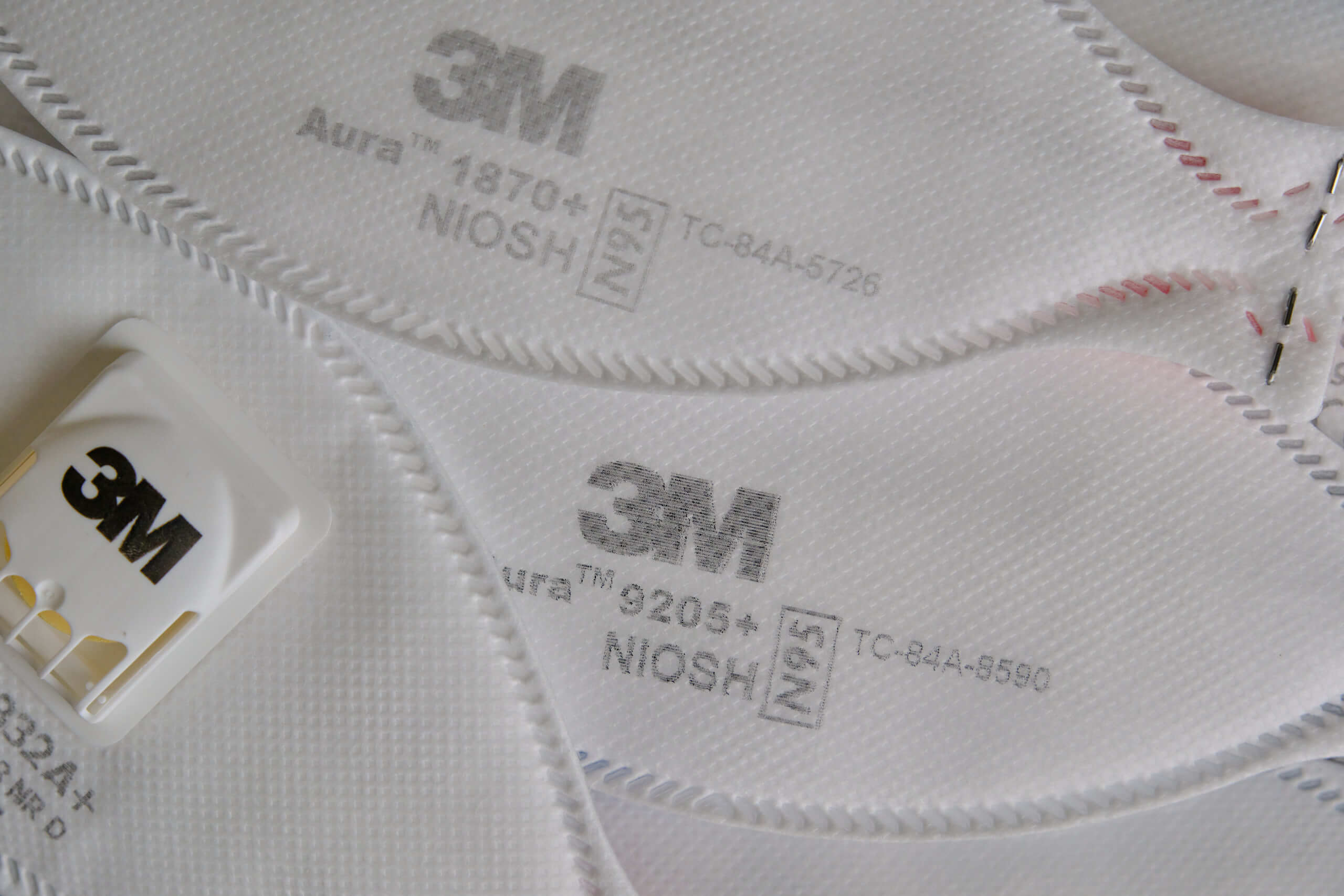
The 3M Aura is my go-to respirator.
A prevalent misconception surrounds the use of masks for air pollution protection. It’s vital to understand that not all masks offer equal defence against polluted air. Highlighting this, a Chinese study alarmingly revealed that many masks in the commercial market fail to deliver adequate protection, often due to poor facial fit. This study underscores the necessity of focusing on mask design and providing consumers with evidence-based recommendations.
The diversity of masks and their rating systems can be overwhelming. However, the task of selecting an effective mask is less daunting than it appears. For detailed insights, I recommend consulting my extensive guide on the differences between mask and respirator ratings.
When choosing a mask, aim for options like the N95, KF94, or similar respirators. These types offer over 94% (or 95%) filtration efficiency against fine dust particles. Crucially, their effectiveness relies on fit, meaning you will need to ensure the respirator fits you well. While fit testing is required for this, you can somewhat judge the fit of a mask without access to the equipment needed for fit testing.
I do want to provide a warning here: while KF94s are easy to find in Korea, they generally provide a very poor fit, and they shouldn’t be worn when you are prioritising protection (unless, of course, you find one that fits surprisingly well). You’re better off getting a respirator that uses headbands and provides a much tighter seal.
Protect Yourself Indoors

Many of us assume that our homes are safe havens from air pollution. However, this belief is sometimes misleading. Merely closing doors and windows is insufficient to shield us from fine dust, particularly on days with high pollution levels. Surprisingly, indoor environments can also be a source of many pollutants and locking yourself indoors with pollutant sources is not a good idea!
Several devices are available to assess the air quality within your home accurately. I have recently reviewed a few notable products, such as the uHoo Air Quality Monitor and the AirGradient ONE. Both devices are exceptional in their ability to track indoor air quality. For those interested in a deeper understanding and proactive management of their indoor air, I highly recommend reading my full reviews of these products.
Ensuring the air in your home remains clean requires strategic measures to prevent outdoor pollutants from infiltrating your living space. One crucial step is to manage ventilation intelligently. Instead of constantly keeping windows open, which might allow polluted air to enter, consider monitoring the outdoor air quality and ventilating during times when the pollution levels are lower. This approach allows you to refresh your indoor air without introducing high concentrations of outdoor pollutants.
If you regularly experience poor air quality in Seoul, investing in an air purifier can be a game-changer, especially during periods of severe pollution. These devices work by actively filtering out harmful particles from the air, thus reducing your exposure to indoor pollutants.
When selecting an air purifier, consider factors such as the size of your living space, the specific pollutants you want to target, and the purifier’s Clean Air Delivery Rate (CADR). For those particularly sensitive to air quality or for families living in high-pollution areas, an air purifier isn’t just a luxury—it’s a necessity for maintaining a healthy living environment.
In conclusion, the assumption that our homes are inherently safe from air pollution is a misconception that requires reevaluation. The presence of fine dust and other pollutants can penetrate even the most seemingly secure indoor environments, especially during high pollution periods. To combat this, utilizing air quality monitors like the uHoo Air Quality Monitor and the AirGradient ONE is essential for gaining a true understanding of your indoor air quality.
Proactive measures, such as intelligent ventilation management and the use of air purifiers, become crucial in maintaining a healthy indoor atmosphere. These steps, coupled with a well-informed approach to selecting the right air purifier, considering factors like living space size and CADR, can significantly enhance the air quality in your home, safeguarding the health and well-being of you and your family in Seoul’s fluctuating air quality conditions.
Conclusion
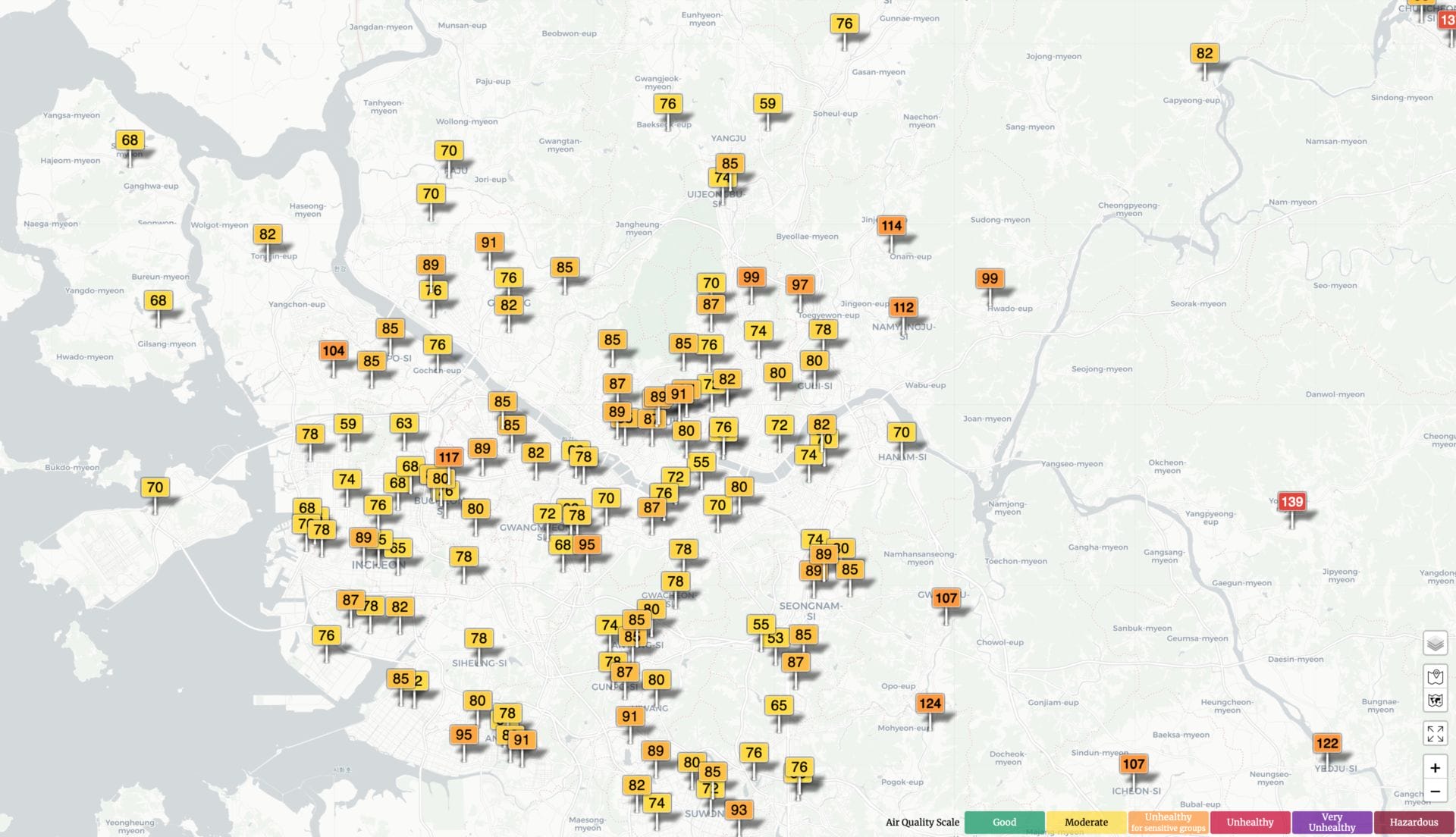
My intention with this post was to help provide a more detailed insight into the air pollution crisis in South Korea and Seoul in particular. It can be hard to find information (especially in English) regarding air quality and fine dust, and I hope that this post can help bring some more understanding to the situation and the causes, effects, and solutions of fine dust.
It’s clear that this environmental challenge is both significant and multifaceted. Over my seven years in the city, I’ve witnessed firsthand how air pollution, influenced by a mix of domestic and transboundary factors, affects daily life and public health. Despite improvements in air quality, thanks to efforts like reducing reliance on fossil fuels, Seoul’s air pollution still frequently exceeds WHO guidelines.
The primary takeaway from this exploration is the crucial need for increased awareness and proactive measures. The pervasive impact of air pollution, often underestimated or misunderstood by both residents and visitors, calls for more comprehensive public education and engagement. Knowledge is indeed power in this context – understanding the sources, risks, and protective measures against air pollution is vital for everyone living in or visiting Seoul.
As part of the solution, I’ve highlighted the importance of practical measures like using air quality monitors, managing indoor air quality, and choosing the right type of mask for outdoor protection. These steps, while seemingly small, can collectively make a significant difference in mitigating the health risks associated with air pollution.
In conclusion, addressing Seoul’s air pollution problem requires a concerted effort from individuals, communities, and policymakers. By combining scientific understanding with practical actions, we can work towards a future where the air in Seoul is cleaner and healthier for all. The journey is ongoing, but with each step, we move closer to making this vision a reality.
Seoul has already set an example for improving air quality, and I’m impressed by the fantastic progress the government has made over the past decade. However, air pollution is still an issue in the capital and further work is needed to minimise the dangers of air pollution and the health cost of this environmental phenomenon.
If you notice any inaccuracies in this post, please email me at [email protected]. Further, if you have any more questions or comments, feel free to email me or leave a comment on this post.
Is Air Pollution Bad in Seoul?
Although not as bad as many cities worldwide, air pollution in Seoul poses a health risk. The air pollution in Seoul is often significantly above the standards set by the WHO.
Further, Seoul often has a few very polluted days every year. On these days, air pollution is considered dangerous for everyone, and staying inside is recommended.
How Can I Check the Air Quality in Seoul?
Luckily, there are a few great resources for checking the air quality in and around Seoul. Two great sites are Cleanair.Seoul and Air Korea. While both of these websites are in Korean, they are easy to understand. Simply look at the relevant district and check the colour.
When Do You Need a Fine-Dust Mask?
It’s hard to identify an exact AQI rating that a mask should be worn at, especially since the WHO guidelines for long-term exposure are well below what Korea often experiences. The AQI site rates 0-50 as ‘healthy’, and that is what is generally believed.
I know many people who wear masks only when the air gets worse than 100(AQI) and some who wear them at 150. For me, however, with asthma, anything over 75 begins to cause difficulty with breathing.
When you wear a mask, it is up to your discretion. The Chinese government recommends masks at 75μg/m³, the US government at 35μg/m³ and the WHO at 25μg/m³ (PM2.5). The issue is that air pollution affects you even at 1μg/m³; there is no clear definition of when it starts to become very dangerous.
When Is Fine Dust Season in Seoul?
If you hear the term ‘fine dust season, ‘ then it most likely refers to the months of January to May. During these months, fine dust in Seoul is more severe due to dry weather and Yellow Dust.
Is Air Pollution in Seoul Dangerous?
Yes, it is dangerous. However, it isn’t something that you need to worry about overly. Managed well, you can minimise the dangers of air pollution.
Have Questions or Comments?
Join the discussion on the BreatheSafeAir Community Forum. Ask any questions you have about air quality or adjacent topics and get quick answers!
